

Exploring the Flames of Inspiration: Wings of Fire Book Review
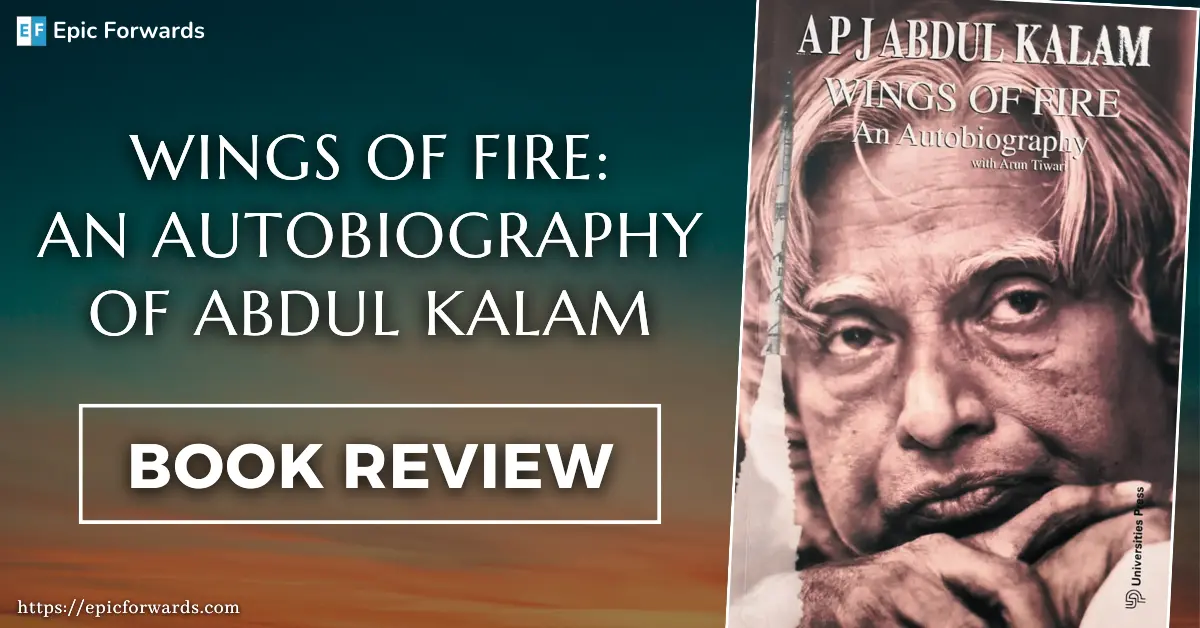
- Post author: James
- Post last modified: March 7, 2024
- Post category: Book Review
- Post comments: 0 Comments

Book Title: “ Wings of Fire “ Author: Dr. A. P. J. Abdul Kalam, Arun Tiwari Genre: An Autobiography Publication Date: 1999
Introduction
In the realm of autobiographies, few tales resonate as profoundly as “Wings of Fire.” Penned by Dr. APJ Abdul Kalam, the former President of India, this memoir is a beacon of hope, resilience, and unwavering determination.
Join us as we embark on a journey through the pages of “Wings of Fire,” exploring its profound impact and timeless wisdom.
A Brief Overview
Published in 1999, “Wings of Fire” chronicles Dr. Kalam’s remarkable journey from humble beginnings in Rameswaram to the highest office in the land. The book offers a glimpse into his early life, his struggles, triumphs, and the values that shaped his extraordinary career as a scientist and statesman.
Analyzing the Flames of Inspiration
Dr. Kalam’s narrative is both captivating and enlightening, offering readers a window into his innermost thoughts and experiences. Through vivid anecdotes and heartfelt reflections, he shares the trials and tribulations he faced on his path to success, inspiring readers to persevere in the face of adversity.
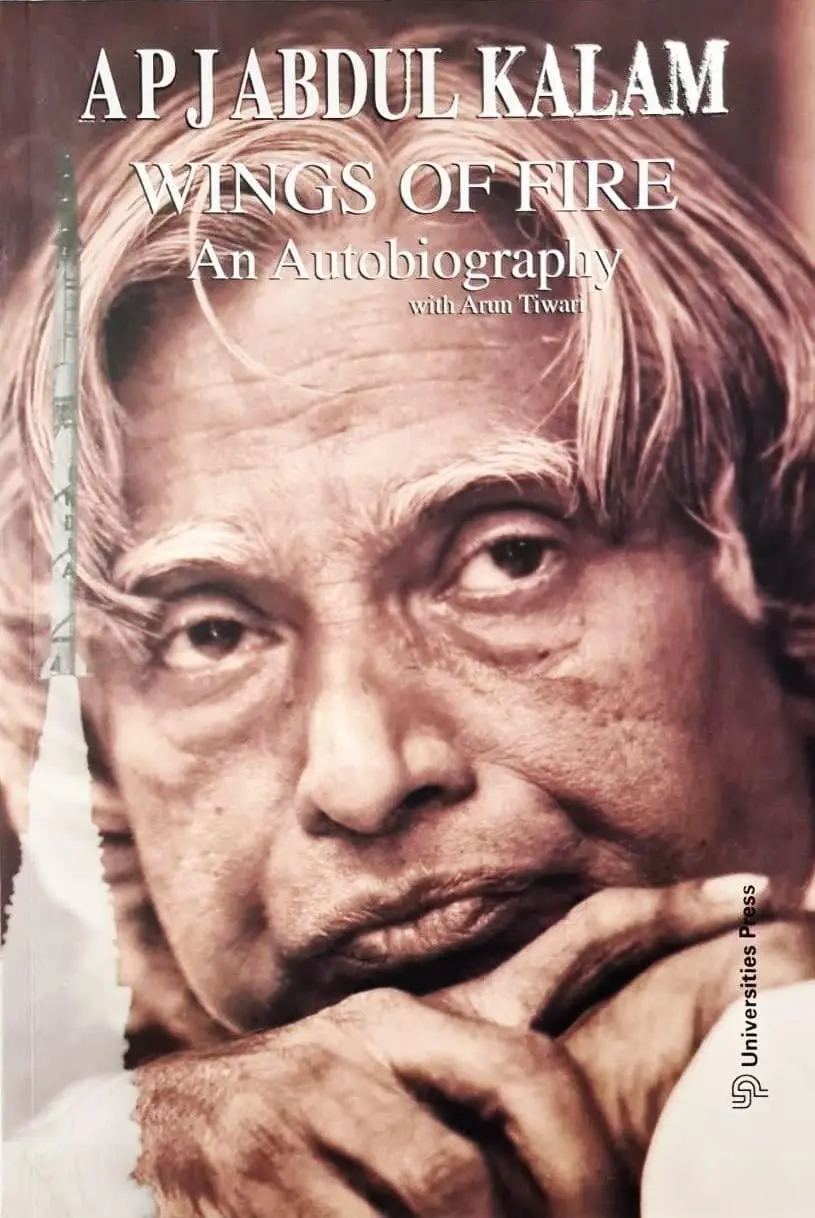
Wings of Fire
Every common man who achieves success by his sheer grit and hard work should share his story with the rest for they may find inspiration and strength to go on in his story. The ‘Wings of Fire’ is one such autobiography by visionary scientist Dr. APJ Abdul Kalam, who rose to be the President of India from very humble beginnings. The book is full of Dr. Kalam’s insights, personal moments, and life experiences. It gives us an understanding of his journey to success.
Igniting the Spirit of Excellence
At its core, “Wings of Fire” is a testament to the power of dreams, perseverance, and self-belief. Dr. Kalam’s unwavering commitment to his goals, coupled with his humility and dedication to serving others, serves as a powerful reminder that greatness is within reach for those who dare to dream and work hard.
You would also like to read: A Review of “Atomic Habits”
A Literary Journey
Dr. Kalam’s prose is simple yet profound, resonating with readers of all ages and backgrounds. His writing is infused with warmth, sincerity, and a deep sense of purpose, making “Wings of Fire” a compelling read for anyone seeking inspiration and guidance on their journey of self-discovery.
Soaring with “Wings of Fire”
On a personal note, “Wings of Fire” has left an indelible mark on my psyche. Dr. Kalam’s unwavering optimism and resilience in the face of adversity have inspired me to pursue my dreams relentlessly. His words serve as a constant reminder that with determination and perseverance, anything is possible.
Key Lessons from “Wings of Fire”
- Dreams are powerful motivators that can drive us to achieve greatness.
- Perseverance and hard work are essential ingredients for success.
- Humility and integrity are virtues that should guide our actions.
- Education is a lifelong journey that empowers us to make a difference.
- Embrace failure as a stepping stone to success and learn from setbacks.
- Surround yourself with mentors and friends who support and inspire you.
- Serve others selflessly and contribute to the betterment of society.
- Innovation and creativity are catalysts for progress and transformation.
- Always maintain a positive attitude and believe in the power of optimism.
- Stay grounded in your roots and never forget your values and heritage.
A Must-Read for Every Dreamer
“Wings of Fire” is not just a book; it’s a manifesto for living a life of purpose and meaning. Whether you’re a student, a professional, or someone searching for direction in life, Dr. Kalam’s autobiography offers timeless wisdom and practical advice to help you spread your wings and soar to new heights.
Embracing the Flames of Transformation
In conclusion, “Wings of Fire” is a literary masterpiece that transcends the boundaries of time and space. Dr. Kalam’s story serves as a source of inspiration and empowerment for generations to come, reminding us that the sky is not the limit – it’s just the beginning of our journey towards greatness.
Ready to Embark on Your Journey of Inspiration? Get Your Copy of “Wings of Fire” Today: Get “Wings of Fire” on Amazon
Meet James, the creative mind behind EpicForwards.com, where he weaves a tapestry of inspiration through quotes from the greats, heartwarming wishing messages, and a celebration of global festivals. Dive into a world where every image, photo, illustration, GIF, and video is not just captivating but also freely available, making every visit an epic journey of visual delights.
You Might Also Like

Discovering Purpose: A Review of “Ikigai – The Japanese Secret to a Long and Happy Life”

Unleashing Potential: A Review of “Atomic Habits” by James Clear
Leave a reply cancel reply.
Save my name, email, and website in this browser for the next time I comment.
Sign me up for the Newsletter & Upadates!

- Top Interviews
- Influencers & Celebrities
- Founders & CEO's
- EMN Membership
- Corporate & CXO's
- Entertainment
Book Review: Wings of Fire by Dr. Abdul Kalam and Arun Tiwari
“ We are all with a divine hearth in us. Our efforts ought to be to give wings to this furnace and fill the world with the glow of its goodness.”
Introduction:
Book Name: Wings of Fire
Author Name: A P J Abdul kalam, Arun Tiwari
Genre: Autobiography
Language: English
Reading a book is a good habit, the habit of reading is one of the best qualities that a person can possess. “If you don’t like to read, you haven’t found the right book.”
“Wings of Fire” An Autobiography of Dr.APJ Abdul Kalam, former President of India. It was written by Dr. Abdul Kalam and Mr. Arun Tiwari, a well-known missile scientist was a colleague of Dr. APJ Abdul Kalam. Dr. Kalam examines his early life, effort, hardship, fortitude, luck, and the chance that eventually led him to lead Indian space research, nuclear and missile programs.
Friends, I don’t have that much knowledge to make a judgment on this book, I just want to express some of my thought with you and what I have learned from this book “Wings of Fire”.
About the Author
“Avul Pakir Jainulabeen Abdul Kalam” his full name, The author was born and raised on Mosque Street in Rameswaram, Tamil Nadu. He served as the 11 th President of India from 2002 to 2007.
Greatly admired all over India, he was a scientist by profession, who played a leading role in developing the country’s missile program. From humble roots in Rameswaram, Tamil Nadu. Dr. kalam in an inspirational autobiography ‘ The Wings of Fire’ traces the rise and the make he made his life.
Arun Tiwari rose to fame as an author with his book Wings of Fire, which he co-authored with Dr. A.P.J Abdul kalam. He has written several books and co-authored five books with Dr. APJ Abdul Kalam. He contributed to the design of the missiles. Tiwari has been the director at the Cardiovascular Technology Institute in Hyderabad. He received the Defence Technology Spinoff Award for developing the Kalam-Raju stent.
About the Book:
This book contains the life of a simple yet determined person. There is so much knowledge and good things that everybody can extract from this book. Reading this book is a very heartwarming and beautiful experience.
This book contains a very detailed description of how great things can be achieved through simple thoughts. This book conveys the message of the authors that always keep your dream high, your goal clear, plan perfectly and do hard work.
The story is all about a warm and intensely personal, deeply passionate, common boat – owner’s son who has become India’s most distinguished living technocrat. The pure faith in God and deep kindness, dealing life with positivity, science, and technological advancements, Love toward one country and many more things are mentioned in this book.
The book is full of insights, personal moments, and life experiences of Dr. APJ Kalam. It gives us an understanding of his journey of success.
This is a story of a boy who was born in a normal and middle-class family. He had a curiosity about aeronautical engineering. He faced so many failures during launching the satellite called SLV [Satellite Launching Vehicle] but he proved that anything can be achieved by keep trying because when you become a failure then you go one step closer to success.
The author, by narrating his life journey evokes the reader to identify with one’s inner fire and potential, for he was of the firm belief that each one of us was born with the strength and potential to make a tangible change in the world. How he inspired himself to achieve his dream and how he went about accomplished so much is what the book captures nicely.
The book recollects many anecdotes and stories from childhood, his time at school and college, He wrote the time spent at the Langley Research Center, NASA and Wallops Flight Facility gets a lot of attention.
Personal tragedies have not left been left out. The time when he lost his father and how he felt when conferred with many awards like the Padma Bhushan have been written in much detail.
The second half of the book deals with the author, the scientist who made a significant contribution in developing the country's guided missile program, a pioneering effort for the security of the nation. It’s not with reason that he was nicknamed the ‘ Missile Man of India’.
I hope this book is best suited for reading for teenagers and youths, to dream and to dare. It shows, how a person from a modest background ends up being the first citizen of a nation of one billion.
In this book, there is something that everybody can extract from and worthy of being read by every Indian. A very detailed description of how great things can be achieved through simple thoughts. Always keep your dream high, set your goals clear, plan perfectly and work through people. I will suggest never miss reading this great book if you haven’t yet.
My rating for the book 5/5
Get a copy of this book easily from Amazon: Wings of Fire
Written By – Prachi Mann
Edited By - Anamika Malik
You may like these posts
Popular posts.

7 Bad Food Combinations You Must Avoid Completely
10 Side Effects of Broiler Chicken
Rover as a Restoration Comedy

Neelima - I’ve Found a Creative Outlet to Express Myself Authentically and Share My Passion for Beauty, Style, and Family Life (Instagram Influencer With 55k Followers)
Prose Style of Addison in “Sir Roger at Home” and “Sir Roger at Church”
Existentialism In ‘Waiting For Godot’ By Samuel Beckett

World's Cutest Baby - Anahita Hashemzadeh
Story Review: ‘The Final Solution’ by Manik Bandopadhyay - The Story of the Gruesome Aftermath of the Partition

Peer Pressure - Advantages and Disadvantages
Footer menu widget.
- Privacy Policy
- Terms & Conditions
Explore all Courses

Micro Credit

Short Courses (Free Learning)
Postgraduate Certifications
Postgraduate Diploma
Undergraduate Diploma
Popular Courses
Business-oriented critical thinking and problem-solving skills help you to acquire qualities designed for Top management and Executive positions, thus DBA is Your Best Choice.
Triple Certification MBA, tailored for Working Executives to get trained on essential aspects of Global Business Management.
FastTrack Your Career- Earn Your MBA in 9-12 Months from GMU, Italy
Transform into the well-rounded Business Professional that organisations are seeking
This MBA in Operations and Project Management from Guglielmo Marconi University will arm you with the skills and knowledge to manage dynamic projects, optimize operational performance, and develop winning growth strategies.
This program will teach you to solve meaningful and complex problems and convert abundant amounts of data into useful insights.
This Dual certification MBA program from Guglielmo Marconi University, Italy helps you to build your skills in all areas of managing and leading organizations.
The Integrated DBA program provides the dual advantages of the Doctorate of Business Administration and Master of International Business Administration programs.
Book Review: “Wings of Fire: An Autobiography of Abdul Kalam” by Dr. APJ Abdul Kalam and Arun Tiwari

“Wings of Fire: An Autobiography of Abdul Kalam” is written by Dr. APJ Abdul Kalam and Arun Tiwari. This book is an autobiography of Dr. APJ Abdul Kalam, former president of India. This story sheds light on the journey of a young boy from Rameswaram to become a renowned scientist. It reflects how simple living, dedication, strong will and hard work led to success. It also shows how cultural unity impacts the lives of individuals.
The story begins with Kalam as a boy around 1930 in the village of Rameswaram where he lived with his parents and four brothers and one sister. In this book, the author tells us how the role of family, relatives, friends, and society contribute to an individual’s life. Kalam describes his village where everyone lives in harmony. Religious discrimination was unknown at that time. A passage that shows the closeness they had: “The high priest of Rameswaram temple , Pakshi Lakshmana Sastry , was a very close friend of my father’s . One of the most vivid memories of my early childhood is of the two men , each in his traditional attire , discussing spiritual matters.”
When he was very young, Kalam wanted to join the Indian Airforce but he was not able to clear the interview. Far from being demotivated, he focused more on studies, started his career in Aeronautical Development Establishment (ADE), and was involved in the design of a hovercraft. He went to NASA on a training program. He moved to Indian Space Research and there he met Vikram Sarabhai. He also met many geniuses who inspired him. The book also describes leadership and teamwork, while making the projects. It shows how a man becomes a leader whenever there is a successful project or a failed one.
The book reveals extensive and detailed project work by Dr. APJ Kalam, which I find distracting from the story of his life. Some readers may find this detailed descriptions boring and unappealing. It highlights the successful execution of “Agni” and other projects.
The book narrates India’s technological achievements at a time, few nations can boast of. It speaks about some brilliant minds who worked behind Indian space research such as Vikram Sarabhai and Dr. Brahm Prakash and their contribution towards ISRO.
As a reader, this book initially is very interesting particularly the portions from his younger days to a college student like how his family encouraged him. Later, the writing becomes a bit monotonous as it gives minute illustrations of the projects. At the end, he offers advice to the younger generation not to get demotivated and lead a positive life.
This book demonstrates how Dr. APJ Abdul Kalam’s simple living and positive thinking became an inspiration for the Indian youth.

Argha Chakraborty
Divyanshi .
It is very helpful for me after writing this review I read the book wings of fire and I love this book I like to read this type of books it helps us to motivate our self and self inspiration.
Latest Insights From UniAthena

Press Release

Our Popular Courses

Get in Touch
I agree with Terms & Conditions .
Do you want to hear about the latest insights, Newsletters and professional networking events that are relevant to you?

Athena Global Education FZE is an Online Education provider offering self-paced Masters, Doctorate, and Microcredit programs in collaboration with European Universities and Reputed Professional Qualifications Authority. Athena is the latest venture of Westford Education Group, a higher education services provider since 2009.
Westford Education Group (WEG) is a leading provider of accredited international education to aspiring learners across the globe. Westford is fast emerging as a reputed brand of global education providers.
- Policies & Procedures
- Board of Governance
- Academic Council
- Executive Council
- Core Principles
Athena Global Education Magdalen Centre, Robert Robinson Avenue, Oxford, OX4 4GA, UK Phone : 01865 784299
- Privacy Policy
- FAQ Glossary
- Terms & Conditions
- Equality and Diversity Policy
- Other Fee & Charges
- Certificate Issuance
- Refer And Earn
MIDDLE EAST
Athena Global Education FZE Block L-03, First Floor, P O Box 519265, Sharjah Publishing City, Free Zone, Sharjah, UAE Phone : +971 65 31 2511
Subscribe to our Newsletter and Webinars
Uniathena Private Limited 9A,Midas Tower Phase 1 Hinjewadi Rajiv Gandhi Infotech Park Pune-411057 Phone: +91 9145665544
All Copyrights Reserved @ Athena Global Education 2021-2024

Wings of Fire Book Review
Wings of Fire, authored by Dr. APJ Abdul Kalam, is a mesmerizing autobiography that takes readers on an extraordinary journey through the life of one of India’s most iconic figures. The book delves deep into the experiences, challenges, and triumphs of a young boy who went on to become a visionary scientist and the 11th President of India. In this Wings of Fire book review, we’ll uncover the essence of this literary masterpiece, highlighting its profound impact on readers worldwide.
Table of Contents
Wings of Fire book review covers the enthralling life story of Dr. APJ Abdul Kalam, a man whose journey from humble beginnings to scientific eminence serves as an inspiration to countless individuals. The book is a testament to Kalam’s unwavering dedication, unyielding spirit, and unshakable belief in himself. With each turn of the page, readers are drawn into a world of challenges and triumphs that shape the destiny of a nation.
The Visionary Beginnings
The early years of Dr. Kalam’s life, depicted in Wings of Fire, offer a glimpse into his childhood dreams and aspirations. The narrative encapsulates his fascination with flight and his unquenchable thirst for knowledge. Through this narrative, readers are introduced to the foundation upon which Kalam’s extraordinary journey was built.
Navigating Adversities
Life is seldom without challenges, and Kalam’s journey was no exception. The book paints a vivid picture of the obstacles he faced, including financial limitations and societal pressures. Kalam’s ability to persevere through these adversities serves as a beacon of hope for individuals striving to overcome their own obstacles.
Igniting Scientific Curiosity
Wings of Fire beautifully portrays Kalam’s entry into the world of aeronautics and space research. His pivotal role in India’s missile program is detailed with precision and enthusiasm. The book ignites readers’ scientific curiosity and showcases the power of innovation and determination.
A President with a People’s Heart
As the narrative unfolds, readers witness Kalam’s ascendancy to the highest office in the country. Despite his elevated status, he remains a humble and compassionate leader who tirelessly interacts with the youth of the nation. This aspect of Kalam’s personality resonates deeply and imparts valuable lessons in leadership and humility.
The Message of Resilience
Wings of Fire conveys a profound message of resilience and determination. Kalam’s journey, marked by both successes and setbacks, underscores the importance of embracing failures as stepping stones to success. This message holds relevance for individuals across various walks of life.
Achieving the Extraordinary
Kalam’s contributions to India’s space and defense programs are nothing short of extraordinary. His involvement in landmark projects such as Pokhran-II reflects his unwavering commitment to the nation’s progress. Through this, the book exemplifies the potential of an individual to leave an indelible mark on history.
Inspiring the Youth
One of the most captivating aspects of Wings of Fire is its ability to inspire young minds. Kalam’s interactions with students and his emphasis on nurturing creativity and curiosity have ignited the aspirations of countless individuals. His words continue to echo in the hearts of those who dare to dream.
Overcoming Limitations
Kalam’s physical limitations, highlighted in the book, serve as a testament to his indomitable spirit. His ability to transcend these limitations and achieve greatness underscores the power of a strong will and an unyielding resolve.
Wings of Fire book analysis
Delving deeper into the narrative, we uncover the layers of Kalam’s life that make this autobiography more than a mere memoir. The book analysis encompasses the themes of ambition, perseverance, and the pursuit of knowledge.
The Ripple Effect
Wings of Fire not only narrates Kalam’s personal journey but also explores the impact of his work on the lives of countless individuals. His contributions continue to inspire generations, creating a ripple effect of positivity and progress.
FAQ’s About Wings of Fire Book Review
How has wings of fire influenced readers.
Wings of Fire has left an indelible impact on readers by showcasing the power of determination and resilience. It has inspired countless individuals to pursue their dreams with passion and perseverance.
What makes Wings of Fire a must-read?
The book’s authenticity, coupled with Kalam’s candid storytelling, makes it a compelling read. Also, It provides valuable insights into the life of a visionary leader and imparts timeless life lessons.
What age group is the book suitable for?
Wings of Fire is suitable for readers of all ages, especially young adults and individuals seeking inspiration. Its engaging narrative and motivational themes transcend age barriers.
Can non-Indian readers connect with the book?
Absolutely, the book’s universal themes of ambition, overcoming challenges, as well as leaving a lasting legacy resonate with readers from all cultural backgrounds.
Are there any sequels or follow-up books?
Yes, Dr. Kalam penned a follow-up book titled “My Journey: Transforming Dreams into Actions,” which further delves into his experiences and insights.
How does Wings of Fire contribute to Dr. Kalam’s legacy?
Wings of Fire immortalizes Dr. Kalam’s legacy by allowing readers to witness his journey firsthand. Also, It serves as a timeless reminder of his contributions to science, education, and nation-building.
In conclusion, Wings of Fire is a literary masterpiece that captures the essence of Dr. APJ Abdul Kalam’s incredible journey. This book review has explored the various facets of Kalam’s life, from his visionary beginnings to his enduring legacy. Also, Wings of Fire continues to inspire individuals to dream big, persevere in the face of challenges, and contribute meaningfully to society. So As readers immerse themselves in the pages of this autobiography, they are reminded that the flames of ambition can truly make one’s spirit soar to great heights.
Share your love
Book Review: Wings of Fire by APJ Abdul Kalam
Introduction.
APJ Abdul Kalam is a renowned Indian scientist who went on to become 11th President of India (2002-2007). He is very well known across India and is a recipient of India’s three highest civilian awards – Padma Bhushan, Padma Vibhushan and Bharat Ratna. Wings of Fire is an autobiography of APJ Abdul Kalam written jointly by Arun Tiwari and Abdul Kalam. It covers Kalam’s life before he became president of India and in 2013 another autobiography titled "My Journey: Transforming Dreams into Actions" was released.
Wings of Fire is an autography of APJ Abdul Kalam covering his early life and his work in Indian space research and missile programs. It is the story of a boy from a humble background who went on to become a key player in Indian space research/Indian missile programs and later became the president of India. The book has been very popular in India and has been translated into multiple languages. I recently picked up a copy and read it in a couple of days. It was very engaging initially, but tended to drag a bit towards the end with lot of technical details and procedural information of his space research and missile projects.
I loved the initial chapters of Wings of Fire since it gives a vivid picture of our country during 1930 – 1950s. Kalam was born in Rameswaram, a southern religious town in Tamilnadu. The initial chapters provides an interesting glimpse of religious harmony which existed before India’s partition,
The famous Shiva temple, which made Rameswaram so sacred to pilgrims , was about a ten-minute walk from our house. Our locality was predominantly Muslim, but there were quite a few Hindu families too, living amicably with their Muslim neighbours. …… The high priest of Rameswaram temple, Pakshi Lakshmana Sastry, was a very close friend of my father’s. One of the most vivid memories of my early childhood is of the two men, each in his traditional attire, discussing spiritual matters. …… One day when I was in the fifth standard at the Rameswaram Elementary School, a new teacher came to our class. I used to wear a cap which marked me as a Muslim, and I always sat in the front row next to Ramanadha Sastry, who wore a sacred thread. The new teacher could not stomach a Hindu priest’s son sitting with a Muslim boy. In accordance with our social ranking as the new teacher saw it, I was asked to go and sit on the back bench. I felt very sad, and so did Ramanadha Sastry. He looked utterly downcast as I shifted to my seat in the last row. The image of him weeping when I shifted to the last row left a lasting impression on me. After school , we went home and told our respective parents about the incident. Lakshmana Sastry summoned the teacher, and in our presence , told the teacher that he should not spread the poison of social inequality and communal intolerance in the minds of innocent children. He bluntly asked the teacher to either apologize or quit the school and the island. Not only did the teacher regret his behaviour, but the strong sense of conviction Lakshmana Sastry conveyed ultimately reformed this young teacher.
Kalam in younger years wanted to be an officer in air force, however he couldn’t clear the interview. He met Swami Sivananda after this failure and I found his words to Kalam interesting and in a way prophetic,
Accept your destiny and go ahead with your life. You are not destined to become an Air Force pilot. What you are destined to become is not revealed now but it is predetermined. Forget this failure, as it was essential to lead you to your destined path. Search, instead, for the true purpose of your existence. Become one with yourself, my son! Surrender yourself to the wish of God,
Here, I saw a painting prominently displayed in the reception lobby. It depicted a battle scene with a few rockets flying in the background. A painting with this theme should be the most commonplace thing at a Flight Facility, but the painting caught my eye because the soldiers on the side launching the rockets were not white , but dark-skinned, with the racial features of people found in South Asia. One day, my curiosity got the better of me, drawing me towards the painting. It turned out to be Tipu Sultan’s army fighting the British. The painting depicted a fact forgotten in Tipu’s own country but commemorated here on the other side of the planet. I was happy to see an Indian glorified by NASA as a hero of warfare rocketry.
The book covers a lot of "behind the scene" information and technical details about India’s satellite and missile program (SLV-3, Prithvi, Agni, Thrisul, Akash and Nag). This might interest technically inclined readers but is sure to put off readers who bought the book to get to know Kalam or to know his principles/ideas. Space and missile programs are huge complex projects and managing them is extremely challenging. The book does give a glimpse of the participatory management technique adopted by Kalam, but at the same time it doesn’t go into details.
Wings of fire covers Kalam’s personal life only briefly which is strange for an autobiography. For example, we don’t know why he decided to remain single or his activities outside space research (even though we can conclude in the end that he was married to science and technology).
Kalam is a poet and is a huge fan of poems. The book contains many of his own poems and his favorite poems. Here is an example,
Do not look at Agni as an entity directed upward to deter the ominous or exhibit your might. It is fire in the heart of an Indian. Do not even give it the form of a missile as it clings to the burning pride of this nation and thus is bright.
Through Wings of Fire, we come across some brilliant people who worked behind Indian space research such as Vikram Sarabhai and Dr. Brahm Prakash. The book also contains about 24 photos and I found the ones from the early days of Indian space program very interesting. This alone is worth the price of the book!
One of the things that stands out throughout the book is Kalam’s positive thinking. He held many high ranking positions in various organizations. Yet in the book he rarely mentions anything about lethargy/corruption of bureaucracy or politicians. The secret to his success seems to be his ability to ignore negative things around him. The book also gives a clue to his popularity in India. Kalam is a simple, secular, inspiring humanitarian.
My Rating: 7/10. I liked the initial chapters, but wasn’t much impressed by later chapters. Kalam should look for a better writer to write his updated autobiography (After I wrote this review I realized that he has released a new autobiography titled "My Journey: Transforming Dreams into Actions").
Online Resources
- Some rare photographs of APJ Abdul Kalam
- Tipu Sultan’s rockets
- Quotes by APJ Abdul Kalam
Leave a Comment
Name (required)
Mail (will not be published) (required)
Main Categories
- Opinion (14)
- Programming (10)
- Travel Reviews (21)
Recent Articles
- Book Review – The Richest Man in Babylon
- Book Review – The Psychology of Money
- Book Review – Four Thousand Weeks
- Mangala Devi Kannagi Temple Trek
- Cheraman Juma Masjid (Cheraman Mosque)
- Padmanabhapuram Palace
- Varayattumotta Trek
- Book Review: The Elements of Computing Systems
- Book Review: Sapiens, A Brief History of Humankind by Yuval Noah Harari
- Book Review: The First 20 Hours, How to Learn Anything Fast by Josh Kaufman
Copyright © Jayson | Privacy Policy

Book Review: Wings of Fire | Dr A.P.J. Abdul Kalam & Arun Tiwari
'wings of fire' is the autobiography of dr a.p.j. abdul kalam and contains the story of dr kalam’s rise from a middle-class family with great determination.
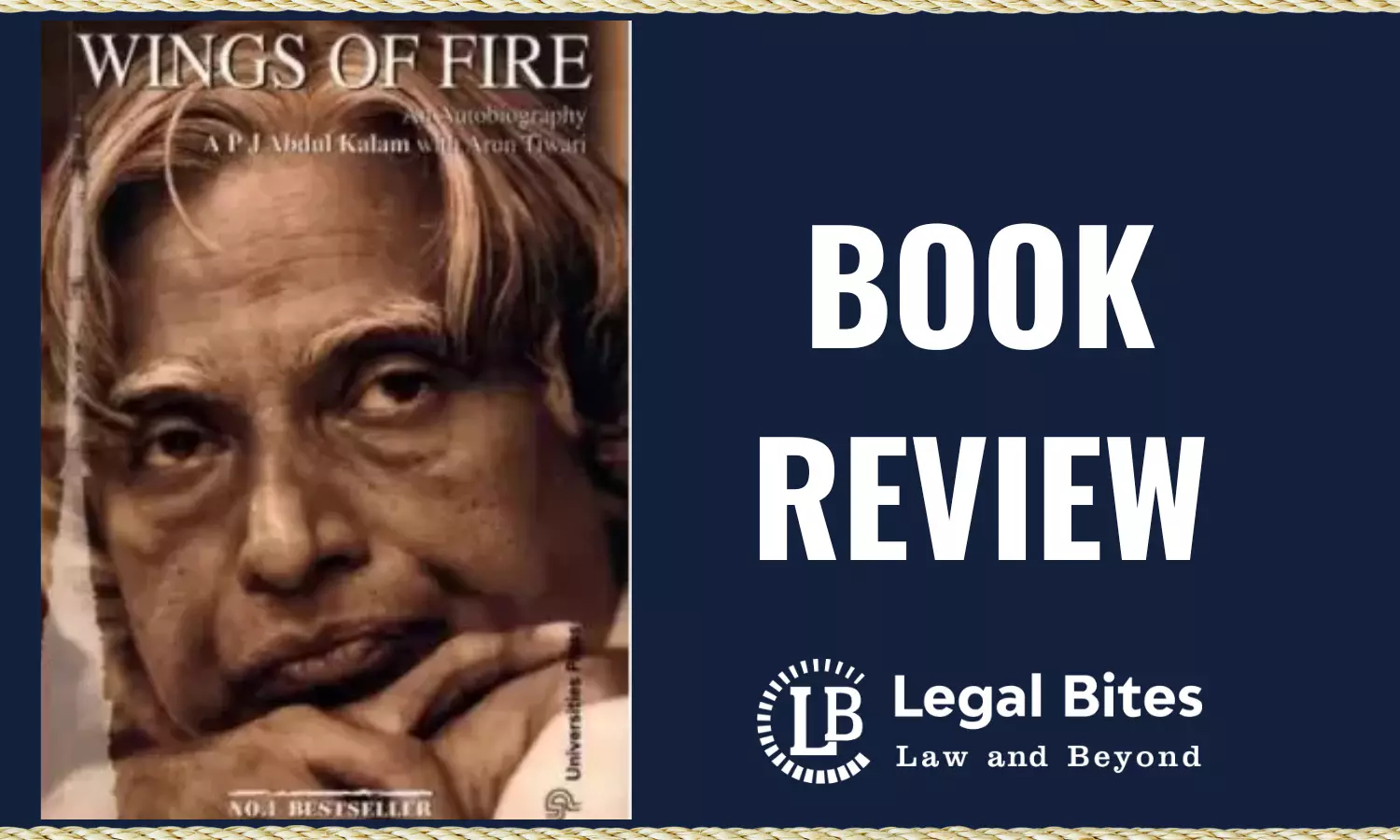
'Wings of Fire' is the autobiography of Dr A.P.J. Abdul Kalam and contains the story of Dr Kalam’s rise from a middle-class family with great determination and his unparalleled career as a defence scientist, culminating in the highest civilian award in India, the Bharat Ratna. The story also contains his journey as the 11th President of India in 2002. The story inspires every individual to achieve dreams with a proper vision towards his/her goal. Ananya Kukreti reviews the book.
Book Name: Wings of Fire
Authors Name: A P J Abdul Kalam, Arun Tiwari
First Published: 1999
Genre: Autobiography
Language: English
One of the best habits a person may have is reading. Reading is a healthy habit. Wings of Fire by Dr A.P.J Abdul Kalam, a former Indian president, wrote an autobiography. He wrote it and Mr Arun Tiwari, a well-known missile scientist who was Dr A.P.J Abdul Kalam's colleague. Dr Kalam explores his upbringing, struggles, perseverance, good fortune, and chance events that ultimately led him to take charge of India's nuclear and missile programmes and its space exploration efforts.
About the Author
His full name is "Avul Pakir Jainulabeen Abdul Kalam," and he was born and raised in Rameswaram, Tamil Nadu, on Mosque Street. From 2002 to 2007, he presided as India's eleventh president.
He was a scientist by trade and was highly esteemed throughout India. He was instrumental in the creation of India's missile programme. From modest beginnings in Rameswaram, Tamil Nadu. In his motivational autobiography "The Wings of Fire," Dr Kalam describes his ascent to success and his life's journey. After the publication of Wings of Fire, a book he co-wrote with Dr A.P.J. Abdul Kalam, Arun Tiwari became well-known as a writer. He has co-authored five books with Dr A.P.J Abdul Kalam and has written several other publications. He contributed to the missile design. The Cardiovascular Technologies Institute in Hyderabad has had Tiwari as its director. He created the Kalam-Raju stent, for which he was given the Defense Technology Spinoff Award.
About the Book
The life of a straightforward but tenacious person is depicted in this novel. This book contains a wealth of information and positive qualities that everybody can benefit from. It's a comforting and lovely experience to read this book.
This book gives a very thorough explanation of how lofty goals can be realised with straightforward concepts. The writers' advice to always maintain your dream high, and your goal distinct, plan meticulously, and work hard is conveyed in this book.
The protagonist of the tale is the son of a common boat owner who has grown to be India's most illustrious living technocrat. He is warm and fiercely passionate. This book discusses a wide range of topics, including unwavering confidence in God, profound kindness, dealing with life positively, scientific and technical breakthroughs, love for one's nation, and many others. Dr A.P.J Kalam's life experiences, insights, and private moments are all included in the book. It enables us to comprehend his successful career path.
The boy in this tale was born into a typical middle-class family. He was interested in the field of aeronautical engineering. He encountered a lot of difficulties while launching the satellite known as the SLV [Satellite Launching Vehicle], but he managed to show that everything is possible if you keep trying since every failure brings you that much closer to success.
Because he was adamant that every one of us was born with the strength and potential to make a real difference in the world, the author encourages the reader to identify with their inner fire and potential by telling his or her own life experience. The book does a good job of capturing how he motivated himself to pursue his dream and how he went about achieving so much.
The book recalls several tales and anecdotes from his early years, his days in school and college, He claimed that the time spent at the Wallops Flying Facility, NASA, and Langley Research Center attracted a lot of attention.
Tragic personal events have not been overlooked. He has written extensively on the moment he lost his father and how he felt after receiving numerous honours including the Padma Bhushan.
The author, a scientist who significantly aided in the development of the nation's guided missile programme, a ground-breaking effort for the country's security, is the subject of the book's second part. He was given the moniker "Missile Man of India" for good cause.
I hope young people can read this book and be inspired to dream and take risks. It demonstrates how a person with a humble upbringing becomes the first citizen of a country with a billion people.
Everyone may learn something from this book, and it deserves to be read by every Indian. A really thorough explanation of how great things may be accomplished with the help of basic thinking. Constantly keep your dream high, establish clear goals, make meticulous plans, and collaborate with others. If you haven't already, I urge you not to skip reading this fantastic book.
Quote from Wings of Fire ,
“We are all born with a divine fire in us. Our efforts should be to give wings to this fire and fill the world with the glow of its goodness.”
Important Links
Law Library: Notes and Study Material for LLB, LLM, Judiciary, and Entrance Exams
Law Aspirants – Ultimate Test Prep Destination

Ananya Kukreti
Ananya has a strong inclination towards policy research and business laws. Institution: Amity University, Noida
Related News


Wings of Fire: An Autobiography
A.p.j. abdul kalam , arun tiwari ( contributor ).
180 pages, Paperback
First published January 1, 1999
About the author

A.P.J. Abdul Kalam
Ratings & reviews.
What do you think? Rate this book Write a Review
Friends & Following
Community reviews.

The country doesn't deserve anything less than success from us. Let us aim for success.
A big shot is a little shot who keeps on shooting, so keep trying.
The collective understanding of the problem is the main attribute of effective leadership.
A good plan violently executed right now is far better than a perfect plan executed next week.

Join the discussion
Can't find what you're looking for.

Wings of Fire by Dr A P J Abdul Kalam – Review
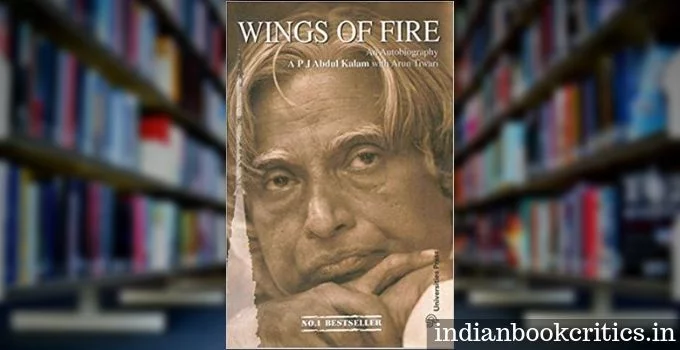
There are some life-changing books that can transform you into a man of energy. In the time of desperation or in frustration we often fall back to reading and reading the books that can inspire us and give certain motivation to come out of the adverse situation. Some rare books hold these kinds of power that can lift our mental strength to conquer the most difficult battle called ‘LIFE’. Many authors tried many approaches to provide us with the best arguments. Dr A. P. J Abdul Kalam, the former president of India and a visionary to whom India owes an abundance of gratitude, is a great name in the list. He has written his autobiography ‘Wings of Fire’ in which he has discussed more the youths of today rather than his own life. His autobiography is a life changer for students, youths, grown-ups and even elders. He has not written any unpractical thing or any hard psychological theory or lets us slip into the iron-logics making us understand the gravity of life. He rather chose to show us a mirror with humility and normal arguments that we often ignore in our daily life.
About the Author:
Dr A P J Abdul Kalam is known as the missile man of India. Wings of Fire is his autobiography where he talks about his achievements and tries to relate those with common people and make them aware and kindle a light of hope deep inside their hearts. You know why Dr Kalam is so famous. Because he never used to talk about his miseries and struggles rather he talks about what he learned from his failures. He was a passionate learner and a man who never quits trying. He has tasted failures so many times in his life but failures made him even stronger to accomplish the goal.
The Autobiography is a testimony to those hard times that the great man had faced. His childhood, his education and difficulties around it, his struggles to get into a college, his failure to become a pilot and so on… In this book, he tries to connect with the youths of today and guide them towards learning some wonderful lessons. A line that motivates me all the time from his book is, “We are all born with a divine fire in us. Our efforts should be to give wings to this fire”. We all have the potential to do something and create something bigger. We need wings to fly and our wings will be hard work, honesty, patience, calmness and energy of never-ending.
His life is like an open book which anybody can take a glimpse and learn something new every time. Desire is like a current that flows constantly in our mind and awakes us always to achieve something. Dreams are not those which we see while sleeping. True dreams are those which never let us sleep.
Wings of Fire ignites the minds of Indian youths to make India even stronger in the field of technology. It proposes an India that is strong, on its own and fully-equipped to lead the world towards peace and a common goal of global harmony. Kalam’s book is a must-read for teenagers, especially! Teenage is the period that shapes the life of a people and if teenagers are inspired by the visions of Dr Kalam, we can safely trust the India of the future!
Conclusion:
Dr Kalam is an inspiration for youth across the world. He has shown how we can change our fate through hard work. He was a great nationalist, patriot and a brave son of mother India. The book is not just the journey of Dr Kalam but also it’s the journey of Agni, Prithvi, Akash, Trishul and Nag-missiles that have become household names in India and that have raised the nation to the level of a missile power of international reckoning. And the autobiography of this great and brave person who has made India a world power in missiles works must be read by as many people as possible. Let’s get into the depths of failures of Dr Kalam and learn how he managed to get out of all this and lead our nation into the future that we live today! A must-read book for the Indian youths.
Get a copy – click here to buy the book – Amazon India
review by Amit for Indian Book Critics

Wings of Fire by Dr Kalam
- Indian Book Critics' Review
A must-read… inspirational and truly wonderful in all possible ways!
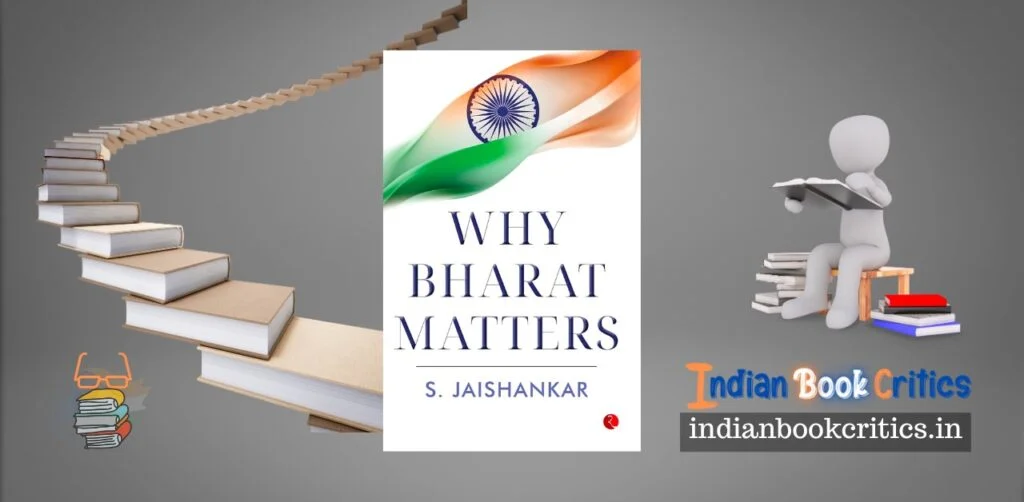
Why Bharat Matters by S Jaishankar Book Review

Lies My Gov’t Told me by Dr Robert Malone – Book Review

Same as Ever: Timeless Lessons on Risk, Opportunity and Living a Good Life by Morgan Housel, a book review
Leave a reply cancel reply.
Your email address will not be published. Required fields are marked *
Post Comment
- Book Reviews
- Book Promotion

- Biography Books
Wings of Fire

Wings of Fire is one of the most inspiring autobiographies in India. This book resonates with the youth on the importance of giving wings to the divine fire within us.
Book Review: Wings of Fire – An Autobiography by A.P.J. Abdul Kalam with Arun Tiwari
Wings of Fire revolves around the personal & professional life of Kalam and the individuals who made an impact on him. The book is mainly divided into 4 sections (Orientation, Creation, Propitiation and Contemplation) of Kalam’s life which contains 16 chapters and an epilogue.
BOOK SUMMARY
Kalam introduces us to his early life in Rameswaram where he was born and raised in a secure middle-class Tamil family. He proceeds to describe the communal harmony in Rameswaram and the stable atmosphere for healthy discussion of spiritual matters.
Hailing from a predominantly Muslim locality, Kalam learned respect for other faiths from his parents. During Kalam’s early life, his close relatives encouraged Kalam to excel in studies and would talk about the discoveries of literature and science beyond Rameswaram. Inspired to fulfill his dreams, he left his home to attend Schwartz High School in Ramanathapuram.
Must Read: Also, Check out our latest post on Best Biography Books Of All Time
Kalam throws light on the time he got selected at Madras Institute of Technology (MIT) for engineering when admission fees were expensive. His elder sister stood by him and helped him financially which deeply moved Kalam to study hard for a scholarship. At MIT, he dreamed to fly an aircraft and hence chose aeronautical engineering.
Kalam sends a message to the future engineering students that ‘ when they choose their specialization, the essential point to consider is whether the choice articulates their inner feelings and aspirations ’.
Kalam was determined to join either the Air Force or a job at Directorate of Technical Development and Production, DTD&P (Air) at the Ministry of Defence. However, Kalam was not successful in joining the Indian Air Force and could not fulfill his dream to fly.
Frustrated, Kalam turned to Swami Sivananda who taught him to accept his destiny and go ahead with life. He learned that this was not in his destiny. He got accepted as a Senior Scientific Assistant at DTD&P (Air). Here, Kalam faced his first failure.
His indigenous Hovercraft ‘Nandi’ was shelved by a new ministry which favored imported hovercrafts. Kalam learned the harsh truth that certain events may be out of control in life.
However, ‘Nandi’ had created interest by then and as if destiny came knocking, Kalam was called for an interview at Indian Committee for Space Research for the post of Rocket Engineer. At this interview, he met Prof. Sarabhai, father of the Indian space program.
In the section Creation, Kalam gives a glimpse of his keen eye while training at NASA. He recollects seeing a painting depicting heroism of Tipu Sultan’s army using rockets against the British.
He learned many valuable management and leadership lessons from Prof. Sarabhai. At an early stage of his career, Kalam trusted that leadership with the free exchange of views was more desirable than giving directions. Kalam also learned that leaders exist at every level.
Kalam throws light on his work schedule when he started leading projects. On entering his office he would first clean the table, prioritize papers for immediate action & remove everything else from sight.
If you want to leave your footprints On the sands of time Do not drag your feet
This memorable line has aged well which tells us to take action now when we are interested in doing a good thing and want to be remembered for it. Interestingly, Kalam preferred a daring attitude with persistence to perfection.
He favored allowing mistakes as a learning process as they are inevitable but generally manageable. He advocated building own education, skills and keeping up-to-date.
Kalam narrates his experience when he was faced with three deaths in his family. He faced failure when the first flight trial of Indian SLV-3 crashed for which Kalam took responsibility as a leader. Kalam describes two visionaries Prof. Dhawan and Dr. Brahm Prakash who mentored him during such days.
Kalam received the Padma Bhushan after SLV-3 was successfully launched. He then moved to rocketry at the Defence Research and Development Organization and successfully introduced the Integrated Guided Missile Development Programme for the development of five missiles namely Prithvi, Trishul, Akash, Nag and Agni.
On the successful launch of India’s missile program, Kalam received the Padma Vibhushan. Despite repeated failures faced, Kalam always maintained that failures are seeds of further learning and emphatically believed that India can be a technological leader.

- Wings Of Fire
- Tiwari, Arun (Author)
- English (Publication Language)
- 180 Pages - 01/01/1999 (Publication Date) - Universities Press (Publisher)
Last update on 2024-05-30 / Affiliate links / Images from Amazon Product Advertising API
- Writing Style
Wings of Fire is a must read autobiography for those who are looking for an Inspiration in life.
My Thoughts
The book starts off interestingly with a reminiscent narrative of early India & Kalam’s boyhood. Throughout the book, a host of genius people in space research & rocketry have been mentioned in good detail. It also contains inspirational poems written by Kalam and some of his favorite ones.
The authors show us the inner workings of a brilliant mind which not only gave wings to the divine fire but also flew the distance.

Best Summary I have Seen Ever in My Life
Summary helped me for making flow chart of this book. Thanks
A well written summary of a must read book!
A good summary of the book! ?
Pretty Apt!
I couldn’t agree more with this review! A 3.5 star for writing style is totally apt! I’m impressed with your eloquence in writing this review. I think the narrative the book shows also humanizes Kalam as an idol.
Well written ?
LEAVE A REPLY Cancel reply
Save my name, email, and website in this browser for the next time I comment.
- Affiliate Disclosure
Enjoy this post? Rate it!

Wings of fire book review
Dr. kalam rose from humble beginnings in south india to create india’s nuclear arsenal and also became the president of the country. read the wings of fire book review to know more about the life and work of dr. apj abdul kalam., table of contents, about the writer, about the book, final thoughts, key takeaways.
‘Wings of fire’ is the autobiography of former Indian president Dr. APJ Abdul Kalam. Dr. Abdul Kalam and his colleague, a well-known scientist, Mr. Arun Tiwari co-authored the book. Dr. Kalam analyses his early life, struggle, adversity, bravery, luck, and the unique opportunity that led him to command India’s space research, nuclear, and missile projects.
‘Avul Pakir Jainulabeen Abdul Kalam’ is the full name of Dr. Kalam and he was born and raised on Mosque Street in Rameswaram, Tamil Nadu. He was India’s 11th President (2002-2007).
He was a physicist by profession who played a key part in creating the country’s missile program. From humble beginnings in Rameswaram, Tamil Nadu to serving as president of India, Dr. Kalam narrates his life’s ascent and fall in his inspirational autobiography ‘The Wings of Fire.’
Arun Tiwari rose to prominence as an author after writing Wings of Fire with Dr. A.P.J Abdul Kalam. He has published several books, including five with Dr. APJ Abdul Kalam.
He was also involved in the design of the missiles with Dr. Kalam. Mr. Tiwari was the director of Hyderabad’s Cardiovascular Technology Institute. He received the Defence Technology Spinoff Award for creating the Kalam-Raju stent.

The book depicts the life of a simple but resolute individual. It contains a wealth of information that anyone will benefit from. Reading this book can be a joyful and lovely experience.
The book is a detailed explanation of how great things can be accomplished with mindfulness. This book offers the reader the thought that you should always maintain your dreams high, your goals clear, prepare meticulously, and work hard.
The book includes many stories and experiences from his childhood, school, and college years. He wrote extensively about his time at the Langley Research Center, NASA, and Wallops flight facility.
Personal tragedies are not ignored in this book. He has written extensively on the moment he lost his father and his struggles as a student from an economically backward family.
He has also written about his achievements in developing ballistic missiles and launch vehicle technology. As well as how he felt when he received numerous awards, including the Padma Bhushan.
The second part of the book is about Dr. Kalam, a scientist who made a substantial contribution to the development of the country’s guided missile program, a pioneering endeavor for national security. He was dubbed the ‘Missile Man of India’ due to his contribution to space research.

‘Wings of fire’ is best suited for school and college students, teenagers who want to dream, dare, and achieve all their goals. It demonstrates how a person from a humble background becomes the first citizen of a nation of one billion people.
This book contains something for everyone and can benefit every Indian who has a vision for a bright future.
‘Wings of fire’ is an extensive explanation of how great things can be accomplished by working hard and doing your best.
- Former Indian President Dr. APJ Abdul Kalam’s autobiography is titled ‘Wings of Fire.’ It was written by Dr. Abdul Kalam and Mr. Arun Tiwari, a well-known missile scientist, and colleague of Dr. APJ Abdul Kalam.
- Dr. Kalam’s remarkable autobiography ‘The Wings of Fire’ chronicles his life’s ascension from humble origins in Rameswaram, Tamil Nadu to serving as President of India.
- Wings of Fire is best suited for high school and college students who desire to dream, dare, and achieve all of their life goals. It shows how a person from a low-income family becomes the first citizen of a nation of one billion people.
Did you find this blog informative? If so, please share your thoughts in the comments section below. Click here to contact us for more information on wings of fire. We would be happy to assist you with your queries.
Liked this blog? Read next: 8 best books for beginners | Enter a new realm with each book.
How useful was this post?
Click on a star to rate it!
Average rating 4.1 / 5. Vote count: 129
No votes so far! Be the first to rate this post.
People also liked

Cost of living and studying in the USA | A guide for MS and MBA students

Study in Singapore | A comprehensive guide for Indian students

Top courses in 2024 to study abroad

Student life in Germany | Highest paying part-time jobs and more

Cost of studying in the Netherlands 2024 | A guide

Entrance exams to study abroad | A complete guide
Leave a reply cancel reply.
Your email address will not be published. Required fields are marked *
Start your journey with iSchoolConnect
Need help with your study abroad applications? Try iSchoolConnect for free!
- Where to Study? USA | UK | Canada | Australia | Singapore | Netherlands | Ireland | Germany | New Zealand
- Tests and Preparation GRE | GMAT | IELTS | TOEFL | SAT | PTE
- Visa Process Student visa for USA | Student visa for Canada | Student visa for UK
- Programs and Universities How to choose a university? | How to choose a career? | University interview tips
- Application Process How to apply? | Letter of Recommendation (LOR) | Essay and Statement of Purpose (SOP) | Document checklist | Finance documents
- Fees and Finances Cost of studying abroad | How to apply for scholarships? | Types of scholarships | Student loan | Accommodation | Part-time jobs
- Calculators Calculate your chances of studying abroad | Calculate cost of studying abroad | Which scholarship are you eligible for?
- [email protected]
- 📞 Call us at: +91-94991-05221

- Search for:
- Earning Calculator
- Publishing Packages
- Services We Offer
- Author Branding
- Book Reviews
Biography Books , Non-Fiction Books
Wings of fire book review: a.p.j. abdul kalam’s autobiography.
Wings of Fire is an inspiring autobiography of the most respectable Former President of India – Dr. A.P.J. Abdul Kalam. Dr Kalam along with Ankit Tiwari pens down the journey of a young boy and developing India. If you are interested in reading the life lessons of Mr Kalam, you must read Wings of Fire Book Review available here.
The book is very impactful and influential. Published in 1999, Wings of Fire and “India 2020: A Vision For the New Millennium” became very popular. This book deals with every essential aspect of Kalam’s life. The text takes us through the ups and downs faced by Kalam sir before tasting the success.
It also involves the moral lessons which we should adopt in our lives. It has something for both academic and non-academic readers. Wings of Fire divides into four segments – Orientation, Creation, Propitiation, and Contemplation. These divided sections enable the reader an easier comprehension of the text.
While, it serves with the vivid description of Rameswaram, and also pictures the developing nation. It is an intensive portrayal of rising of Kalam. At the same time, the birth of AGNI, TRISHUL and NAG missiles have become household names in India. These missiles have allowed international acknowledgement to India.
The autobiography makes us believe in the power of dreams, Belief and Hope. Dr Kalam tells how with determination and consistency one can achieve anything. By reading the Wings of Fire Book Review, you will get a sound knowledge about what it contains and what you are going to learn.
It is a very encouraging tale of honourable Dr Abdul Kalam. We find the book translated and published into thirteen languages. Globally, it is available to read in French and Chinese languages.
Table of Contents
About Author- Dr. A.P.J. Abdul Kalam
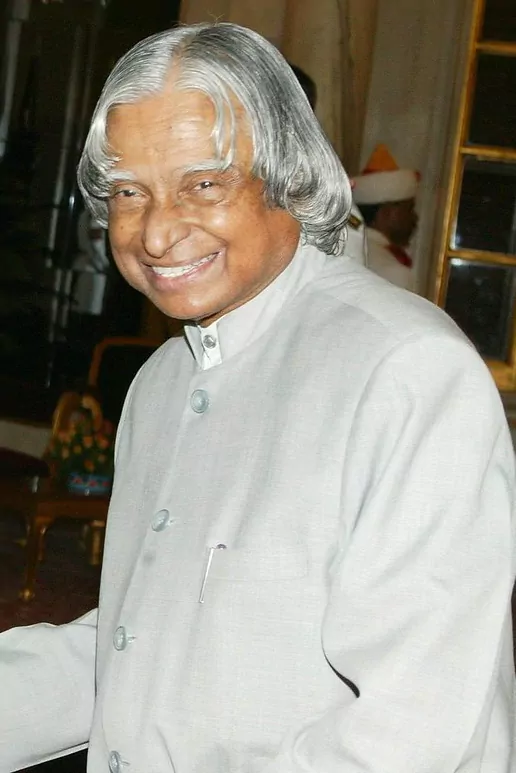
Avul Pakir Jainulabdeen Abdul Kalam was born on 15 October 1931 and died on 27 July 2015. He was the eleventh President of India (2002-2007), and also knows as “THE MISSILE MAN OF INDIA” within and outside India.
Being a great Aerospace Scientist, he was a great politician too. Dr Kalam spent his early years in Rameswaram, Tamil Nadu. Later he moved to Ramnathpuram and Chennai for higher studies.
He studied physics and aerospace engineering and worked as a scientist at Defense Research and Development Organization (DRDO) and the Indian Space Research Organization (ISRO).
Dr Kalam contributed to military missile development efforts and India’s civilian space program. The development of ballistic missile and launch vehicle technology earned him the title of MISSILE MAN OF INDIA.
As a human, Dr Kalam has been benevolent throughout his life. We find him keen to learn and grow. He did not have in himself a tinge of pride.
Dr. Kalam possessed a sense of compassion and gratitude for whosoever crossed his path. Not only did science but he also delved into literature.
Dr. Kalam held profound affection for his motherland. The support and blessings of his family, friends and mentors allowed him to step up. He received many prestigious awards including Padma Bhushan and Bharata Ratna Award.
While delivering a lecture At the Indian Institute of Management (Shillong), he collapsed and left for the heavens.
Wings of Fire- Book Review
Orientation.
The Wings of Fire throws light on the life of Dr Kalam. The story of a dreamer, who rose from rags to riches. The division of the text into four segments helps the reader to understand each section in a better way. The first segment deals with the childhood of the visionary.
He holds immense respect for his family, friends and mentors. The walk with Ahmed Jalaluddin is among the best memories of his childhood.
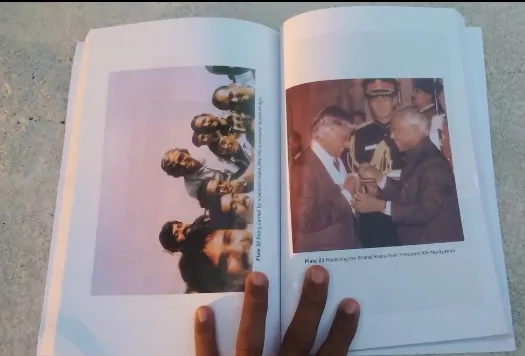
Dr. Kalam earned his first wages with the help of his cousin Samsuddin. The depiction of close-knit relations among people of different religions is pleasing.Once at school, Kalam became a victim of religious bigotry. The new teacher asked Kalam not to sit with a Hindu boy. The teacher was later, made to apologize.
Another teacher of Kalam invited him for dinner at his place. The teacher’s wife denied serving a Muslim boy in her holy kitchen. Kalam was then, served the food by his teacher. The teacher called him again for dinner. This time the wife of the teacher served the meal to him. Dr. Kalam’s mother inculcated in his kindness and faith in good. He inherited from his father self-discipline and honesty.
His sister sold her gold jewellery to pay his fees. People around Kalam were noble and kind. They believed in the little seagull who aimed at flying.
This segment of Wings of Fire includes Kalam’s further education and work experience. At Ramnathpuram, his faculty Professor Iyer made him understand the importance of desire, belief and hope.
After completing his Bachelors in Physics in 1950, he discovered that physics does not interest him. He moved to Chennai and enrolled himself at Madras Institute of Technology.
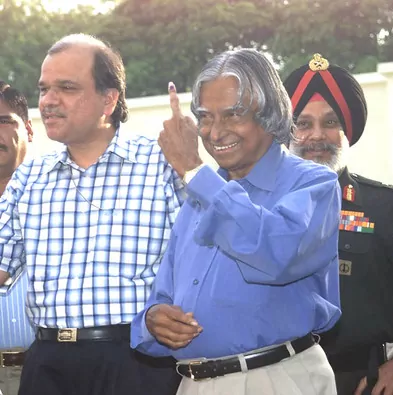
Dr. Kalam studied Aerospace engineering and worked as a trainee engineer at Hindustan Aeronautical Limited. He got interviewed for both the Air Force and the Directorate of Technical Development and Production, DTD&P(Air), at the Ministry of Defense.
His dream of flying got shattered. The rejection from Air Force left him numb. He met Swami Sivananda who told him to believe in the journey and keep moving ahead.
A few years later, the transfer at ADE in Bangalore offered him the designation of director. There, he worked at project Nandi.
Professor Sarabhai took his interview at ICSR. Professor Sarabhai influenced Kalam the most. He served as a rocket engineer at ICSR. In 1962, NASA welcomed Kalam for the training of rocket launching.
Launched on 21 November 1963 the first Indian Rocket brought success to him. Under the supervision of Professor Vikram Sarabhai, Kalam headed the project of a Satellite Launch Vehicle.
The demise of Professor Sarabhai left Kalam in a state of utter shock. Dr Kalam titled him as the Father of Indian Science. The project of SLV brought disappointment to him. The successful launch of SLV took place on 18 July 1980.
Propitiation and Contemplation
These last two sections provide us with a picture of an established Kalam. He receives many awards during this tenure.

Dr. Kalam feels agitated when he does not find his father, mother, Jalaluddin, and Prof. Sarabhai to celebrate his achievements. He envisions a technologically developed India. He toils day and night to make his dream come true.
The third section covers the years between 1980 to1991. After many struggles, Kalam gets appointed as a Director in DRDL in 1982.
Anna University, Madras confers the honorary degree of Doctor of Science on him. With the successful development of Ballistic Missiles, he gains the title of Missile Man of India.
The government of India honoured him with Padma Bhushan on 26 January 1981. The twenty-four picture plates keep a reader entertained.
Kalam’s contribution to some important technological developments is noteworthy. As a rocket scientist, he worked for the triumphant launch of SLV3, AGNI, TRISHUL, AKASH and NAG missiles.
The last section covers the later years of Kalam’s life. Dr Brahm Prakash played an important role in shaping his leadership skills.
Kalam held respect and integrity for his seniors. He mentions his vision for a proud India. He attains many honours and awards for his performance and talks about his dream for the year 2020.
In the epilogue, we get details about his three major scientific establishments. These establishments are Space, Defense Research and Atomic Energy. There is so much like this in the book, but you need to read the wings of fire book review to get the actual insights.
My Understanding of Dr. A.P.J. Abdul Kalam from The Wings of Fire
Dr. Kalam was a virtuous man. With his feet on the ground, he aspires to touch the sky. He was a great visionary. His contributions to India are huge. He worshipped science.
Dr. Kalam proved to the world that the union of science and faith is possible. He was a “spiritual scientist”, and a remarkable leader.
Dr. Kalam knew how to keep his team tact. He made sure that everyone has equal participation in the project. The most motivating aspect about him is his will to never give up.
He dreamed of a self-sufficient India. Dr. Kalam believed in producing “swadeshi” equipment rather than purchasing from other countries.
Dr. Kalam viewed the potential in India to develop her own rockets and satellites. Further, he laid the foundation for missile technology in India, and attained the title of Missile Man of India.
As a young man, he was eager to learn. His reminiscence of Rameswaram was among his best memories.
He had many well-wishers including his family, friends and mentors. They had faith in the boy’s dream. Kalam possessed gratitude and kindness. His father’s blessing was rendered as a support for him.
Dr. Kalam was an honest, self – disciplined and laborious human. He never fears working hard irrespective of any situation.
People used to adore him for his courage and determination. He was a commendable poet and was a man of morals and values.
What did I like the Most in Wings of Fire?
The narration of the text is praiseworthy. The language used by the writer is simple. It seems that the author is talking straightway to the reader.
The initial chapters of the book are very intriguing. The description of the natural beauty of Rameswaram is pictorial. Readers get a chance to walk around the lanes of Rameswaram. We come across how religious bigotry gets imbibed in young minds.
The representation of communal harmony is heavenly. The morals mentioned are a grooming session for everyone.
A burning desire in Kalam to do something is propelling. They tell us how delicate and essential our relationships are. He valued the people around him.
Something that I liked the most is poems. Dr. Kalam was quite fond of poems. The mention of different stanzas of poems at the end of the paragraph adds to its beauty.
Kalam’s use of the poem gives a shining effect to the text. His devotion to science is also notable. Dr. Abdul Kalam was a humble man. His life has something to teach everyone. The struggles of Kalam are genuine and may leave you in tears. I would suggest you to before purchasing the book, prefer reading the Wings of Fire Book Review so that you can understand the autobiography better.
Liked it? Explore more Non-Fiction Books.
Wings of Fire Book Quotes
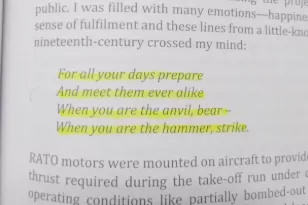
“Adversity always presents opportunities for introspection.” “The importance of the peak lies only in the fact that it defines the sides.” “Within the mind are all the resources required for successful living. Ideas are present in the consciousness, which when released and given scope to grow and take shape, can lead to successful events.” “To succeed in life and achieve results, you must understand and master three mighty forces— desire, belief, and expectation.” “We are all born with a divine fire in us. Our efforts should be to give wings to this fire and fill the world with the glow of its goodness”.
Listen to this Page. Try it!!
Team-Booksloveme
Leave a reply cancel reply.
You must be logged in to post a comment.
Username or email address *
Password *
Remember me Log in
Lost your password?
WhatsApp Booksloveme Publishers!
A School Library Blog for Everyone

Wings of fire – Book Review

Wings of fire is written by APJ Abdul kalam and Arun tiwari. Wings of fire is an autobiography of APJ Abdul kalam covering his early life and his work in Indian space research and missile programs .It is the story if a boy from a humble background who went on to beacame a key player on Idian space research and later he became the president of India. The book has been very popular India as well as all over the world . It was very engaging initially but tended to drag a bit towards the end with a lot of technical details and information of space researchresearch and missile project.
I loved the initial chapter of “wings of fire” Since it gives a great pictures of our country during 1930-1950 . Kalam sir was born in Ramasweram. The initial chapter provide a great glimpse of religious harmony that existed during the partition of India. In younger year, kalam wanted to be an officer of air force , however he couldn’t clear the interview. Then, he met Swami sivananda after this failure and I found the words very interesting as well as prophetic.
In the book I learnt how kalam started his career in Aeronautical development establishement and also involved in designing of the hovercraft. Later ,he moved to Indian space research which ws the brain child Vikram sarabhai . In 1963 kalam went to NASA facility in USA ( Maryland) as part if a training program of rocket launching techniques. There he came across a painting which depicts Tipu sultan rocket warfare against British.
The book covers lot of ‘Behind the scenes’ information and technical details about missile program and Indian satellitesatellite, ( SLV – 3, prithvi, agni, Akash, thrishul, nag etc. ) Space and missile program are a huge project and managi g them is extremely challenge. The book does give a clear glimpse of the participatory management technique adopted by APJ Abdul kalam. But it had not be explained in the book.
Wings of fire covers klaam sir personal life only briefly which is strange fir an autobiography . Kalam sir is a poet and I am a huge fan of his poetry. The book contain many of his poem and some of the words and phrases get attached with my heart.
Through wings of fire, I had seen many great personality Vikram sarabhai and Dr. Brahm prakash . The book also contain almost 23 photos. While seeing that photo and kalam’s poetry I fell to be very proud and I wanted kalam sir be live.
One of the thing that stands through out the book is kalam’s positive thinking. He held many high rankings in various organization . The secret to his success seems to his ability to ignore negative things around him. The book also gives the popularity of India .
“APJ Abdul kalam was simple , secular inspiring humanitarian”
Review Submitted by Devika S, Class 9B, Kendriya Vidyalaya Adoor, Shift1
No related posts.
Leave a Reply Cancel reply
Your email address will not be published. Required fields are marked *
Save my name, email, and website in this browser for the next time I comment.
Privacy Overview

Wings of Fire by Abdul Kalam Summary and Analysis
An autobiography.
Life gets busy. Has Wings of Fire been gathering dust on your bookshelf? Instead, pick up the key ideas now.
We’re scratching the surface here. If you don’t already have the book, order it here or get the audiobook for free to learn the juicy details.
Abdul Kalam’s Perspective
Abdul Kalam was one of India’s most distinguished scientists. He was an Aerospace engineer, professor, and chancellor of the Indian Institute of Space Science and Technology. On top of this, he also served as the 11th President of India from 2002 to 2007. During his term as President, he was popularly known as the People’s President.
He was responsible for the development of India’s first satellite launch vehicle, the SLV-3. Kalam is popularly known as the Missile Man of India for developing ballistic missiles and space rocket technology. Kalam also played a pivotal role in India’s Pokhran-II nuclear test in 1998, the first since India’s initial nuclear test in 1974.
He also received honorary doctorates from thirty universities and the country’s three highest civilian honors — Padma Bhushan (1981), Padma Vibhushan (1990), and Bharat Ratna (1997).
Listen to the audiobook summary of Wings of Fire .
Introduction
Wings of Fire is the autobiography of the former President of India, Dr. Abdul Kalam. Kalam went from being a humble boy in South India to developing India’s nuclear weapons and becoming President. Through this autobiography, the reader gains a glimpse into pre-partition India. Kalam also exposes readers to the positive thinking and ideas that helped him become such a success. This is the story of Kalam’s rise from obscurity and his personal and professional struggles. It is also a saga of independent India’s struggle for technological self-sufficiency and defensive autonomy.
StoryShot #1: Kalam’s Upbringing
Kalam starts the book at the beginning of his life. He was born in Rameswaram, India, to a secure middle-class Tamil family. His father owned a boat, which is a sign of wealth. Rameswaram was a great environment to grow up in, as there was a tight-knit community where everybody supported each other. People were willing to talk about religion and spirituality openly. From a young age, Kalam developed a respect for other religions. His father also worked as an Imam in the local mosque. Kalam grew up believing that faith is an essential part of being human.
All family members encouraged Kalam to work hard and excel at school. Kalam’s family talked a lot about the latest advancements in science and new groundbreaking literature over dinner. These conversations formed a foundation for the passion for academia that Kalam developed. Kalam was close to his parents and described his mother as more like a friend than a parent. He also introduces the readers to his closest friend, Ahmed Jalaluddin. Kalam developed intellectual and spiritual maturity from a young age because Ahmed was about 15 years older. They frequently visited the mosque together and talked about Islam.
StoryShot #2: Learning Difficult Lessons at High School
To fulfill his dream of learning about the most advanced technology and science, Kalam left his hometown to attend Schwartz High School in Ramanathapuram. At first, Kalam thoroughly enjoyed his time at school. However, one day a new teacher arrived. This teacher, called Rameswaram Shastry, saw Kalam sitting next to a Hindu student. He told Kalam that this was not allowed and decided to send Kalam to the back of the class. This was an early example of the beliefs people held during the partition of India. After this experience, Kalam decided to stop the poison of prejudice from spreading, rather than spreading it himself. He continued to be open to all religions throughout his life, including during and after India’s partition.
When Kalam was a young boy, he sold newspapers to help his brother reduce their financial struggles. In the book, Kalam praises the demands and support of friends and family as the cornerstone of his life’s successes.

StoryShot #3: Kalam’s First Experiences With Engineering
Kalam continued to excel throughout high school and remained particularly interested in science. After completing the B.Sc. in physics, Abdul Kalam noticed that he needed to engage with engineering to make his dreams a reality. So, he chose to apply for an engineering course at the Madras Institute of Technology. That said, despite coming from a relatively wealthy background, the admission fees were still too expensive for him. Luckily, his eldest sister saw his potential and was willing to help him obtain a place. She supported him financially throughout the early stages of his time at the Madras Institute of Technology.
StoryShot #4: Learning to Fly
This generosity encouraged Kalam to work as hard as possible to obtain a scholarship. His hard work eventually paid off, and he took some financial burdens off his elder sister. As well as academic success, Kalam was working towards living his dream. He had always dreamed of flying an aircraft. So, it makes perfect sense that Kalam decided to choose aeronautical engineering as his major at university.
Kalam provides advice to future engineering students. Specifically, he says, ‘When they choose their specialization, the essential point to consider is whether the choice articulates their inner feelings and aspirations.’ Kalam decided to pursue aeronautical engineering because it aligned with his passions. Kalam suggests that future engineers, and all future professionals, should choose a role that aligns with their dreams. This is the most critical factor.
StoryShot #5: Looking for Work
After graduating from university, Kalam had to choose between two passions. His first option was joining the Air Force. His second option was to seek a job at the Directorate of Technical Development and Production. Essentially, the latter would involve working for India’s Ministry of Defence. Kalam applied for the Air Force to achieve his dream of flying, but he was ultimately rejected.
Kalam was initially deflated. Deeply disappointed, he trekked down to nearby Rishikesh, where he met Swami Sivananda, a spiritual teacher, author and yoga guru. Kalam considers this meeting to be one of the most important events in his life. Sivananda taught him that he had to accept his destiny and go ahead with his life. It is not worth mulling over things in the past. Instead, Kalam was better off moving forward. This is exactly what Kalam did. He could still use his passion for aeronautical engineering by working for the Directorate of Technical Development and Production as a Senior Scientific Assistant.
Within this role, Kalam experienced significant setbacks. He thoroughly enjoyed the freedom he was given to design his aircraft. He designed an indigenous Hovercraft called Nandi. Kalam worked hard and used innovation to design this hovercraft. The new ministry rejected his design for imported hovercrafts. Essentially, Kalam had been told that his work was not good enough. Again, his aeronautical dreams had been quashed, but Kalam remained positive. He remembered what Sivananda had taught him: Certain events may be out of your control in life, and you should not take them personally.
StoryShot #6: Kalam’s Destiny Changes
Although Kalam’s design, Nandi, was initially rejected, this was not the end of its story. The design had already created interest and buzz. Then, as if destiny came knocking, the Indian Committee for Space Research invited Kalam for an interview. They were going to interview him for the post of Rocket Engineer. In this interview, he met Prof. Sarabhai, the father of the Indian Space Program. Kalam got the job and spent many years working as a Rocket Engineer. So, a large proportion of this part of the book is educational. Kalam outlines the different space stations and organizations based within India. After his initial setback, Kalam excelled in rocket science. He received the Padma Bhushan award after SLV-3, one of his rockets, was successfully launched. The Padma Bhushan is the second-highest civilian award of the Republic of India. He then moved to rocketry at the Defence Research and Development Organization. Kalam successfully introduced the Integrated Guided Missile Development Programme for the development of five different missiles. On the successful launch of India’s missile program, Kalam received the Padma Vibhushan. Kalam thinks failures are seeds for learning and believed India could be a technological leader despite repeated failures.
He also learned many valuable management and leadership lessons from Prof. Sarabhai. In the early stages of his career, Kalam trusted that a free exchange of views was more desirable than giving direction. Kalam also learned that leaders exist at every level.
StoryShot #7: Kalam’s Approach to Work
Kalam had a strict schedule, even though he was leading projects. Firstly, he would enter the office and clean his table. This allowed Kalam to create an environment where he could work effectively. After cleaning his table, he prioritized the papers that required immediate action. While doing this, he would remove everything else from his sight, other than those papers. His focus allowed him to take action immediately when he identified work that needed to be done. This was especially true for time-critical tasks that could make an impact or make him memorable.
Kalam’s general work attitude was daring, with persistence to perfection. In his eyes, perfection requires an individual to make mistakes in the past and learn from them. So, he favored allowing mistakes as part of the learning process. He decided to adopt this approach because mistakes are inevitable but generally manageable. Kalam suggests that you build your own education by developing the skills that will correct your mistakes.
Based on this ethos, Kalam was awarded India’s top three civilian awards, i.e., Bharat Ratna in 1997, Padma Vibhushan in 1990, and Padma Bhushan in 1981. He was also glorified with honorary degrees from more than 30 universities around the world.
StoryShot #8: Kalam’s Death
Although not covered in this book, Kalam’s death follows the type of person he was. Specifically, Kalam passed away due to cardiac arrest while giving a speech to scientific students. He committed his life to advancing India’s scientific and technological understanding.
StoryShot #9: The Three Mighty Forces
To succeed in life and achieve results, you must achieve and understand three mighty forces.
- Expectations
These were the most important forces driving Kalam towards success. He wanted to make a difference in India through science and technology. Kalam also believed in his ability and in God to guide him towards these desires. This belief was strong and was not swayed by setbacks, such as when he was rejected from the Air Force. Instead of giving up, Kalam accepted that his life was just guiding him towards a different and more complementary path. Finally, Kalam explains that you need to have expectations for your life. Expectations allow you to set goals and react accordingly. Without expectations, you will not have any success or failure. Importantly, expectations allow you to identify failure and learn from these experiences.
Final Summary and Review of Wings of Fire
Wings of Fire covers the life of one of the most influential individuals in India’s history. Abdul Kalam had a huge political influence on his home country, but he also influenced the scientific world. The message you can take from this book is to use desire, belief and expectations to achieve your goals.
Wings of Fire Quotes
“Dreams are not that which you see while sleeping; it is something that does not let you sleep.” — Abdul Kalam, Wings of Fire
“When learning is purposeful, creativity blossoms. When creativity blossoms, thinking emanates. When thinking emanates, knowledge is fully lit. When knowledge is lit, economy flourishes.” — Abdul Kalam, Wings of Fire
“If you fail, never give up because F.A.I.L. means first Attempt In Learning. End is not the end, in fact E.N.D. means Effort Never Dies. If you get No as an answer, remember N.O. means Next Opportunity.” — Abdul Kalam, Wings of Fire
We rate Wings of Fire 4.4/5.
How would you rate Abdul Kalam’s book based on this summary?
Wings of Fire PDF, Free Audiobook, and Animated Summary
This was the tip of the iceberg. To dive into the details and support the author, order the book or get the audiobook for free .
Did you like the lessons you learned here? Comment below or share to show you care.
New to StoryShots? Get the PDF, free audio and animated versions of this analysis and review of Wings of Fire and hundreds of other bestselling nonfiction books in our free top-ranking app. It’s been featured by Apple, The Guardian, The UN, and Google as one of the world’s best reading and learning apps.
Related Book Summaries
Gandhi by Mahatma Ghandi
Elon Musk by Ashlee Vance
Can’t Hurt Me by David Goggins
Long Walk to Freedom by Nelson Mandela
The Autobiography of Martin Luther King by Martin Luther King
I am Malala by Malala Yousafzai
How to Be an Antiracist by Ibram X. Kendi
Born a Crime by Trevor Noah
The Audacity of Hope by Barack Obama
Man’s Search for Meaning by Victor Frankl
Share to show you care
Similar Posts

Stillness is the Key Summary and Review | Ryan Holiday
Life gets busy. Has Stillness is the Key been gathering dust on your bookshelf? Instead, pick up the key ideas now. We’re scratching the surface here. If you don’t already have the book, order the book or get the audiobook for free to learn the juicy details. Synopsis Stillness is the Key taps into a quality that has been…

The New One Minute Manager Summary and Review | Ken Blanchard
The Update to Management Classic, The One Minute Manager Life gets busy. Has The New One Minute Manager by Ken Blanchard been sitting on your reading list? Instead, learn the key insights now. We’re scratching the surface here. If you don’t already have the book, order it here or get the audiobook for free to…

What It Takes Summary and Review | Stephen A. Schwarzman
Lessons in the Pursuit of Excellence Life gets busy. Has What It Takes: Lessons in The Pursuit of Excellence by Stephen A. Schwarzman been on your reading list for a while? Learn the key insights now. We’re scratching the surface here. If you don’t already have the book, order it here or get the audiobook…

How to Make Money in Stocks Summary | William O’Neil
A Winning System in Good Times and Bad Life gets busy. Has How to Make Money in Stocks been on your reading list? Learn the key insights now. We’re scratching the surface in this How to Make Money in Stocks summary. If you don’t already have William O’Neil’s bestselling book, order it here or get…

Zen and the Art of Motorcycle Maintenance Summary and Review | Robert M. Pirsig
An Inquiry Into Values Life gets busy. Has Zen and the Art of Motorcycle Maintenance been gathering dust on your bookshelf? Instead, pick up the key ideas now. We’re scratching the surface here. If you don’t already have the book, order the book or get the audiobook for free on Amazon to learn the juicy details. “Zen and the Art of…

How to Win Friends and Influence People Summary | Dale Carnegie
Life gets busy. Has How to Win Friends and Influence People by Dale Carnegie been sitting on your reading list? Instead, learn the key insights now. In this How to Win Friends and Influence People summary, we’re scratching the surface. If you don’t already have the book, get the audiobook for free on Amazon to…

Thanks for reading and leaving this comment, Anshuman!
Leave a Reply Cancel reply
Your email address will not be published. Required fields are marked *
Save my name, email, and website in this browser for the next time I comment.
This site uses Akismet to reduce spam. Learn how your comment data is processed .
- 13 LinkedIn
- 23 WhatsApp
- 29 Facebook

- Recent Reviews
- New Releases
- Five Star Reads
- Best of the Years
- Children’s (MG) SFF
- Young Adult (YA) FF
- Comics Reviews
- How to Read Comics
- Short Fiction
- Stand-Alone SFF
- British Science Fiction Award
- Locus Award
- Mythopoeic Award
- Nebula Award
- Shirley Jackson Award
- Theodore Sturgeon Award
- World Fantasy Award
- SFF on Film & TV
- The FanLit Reviewers
- Our rating system
- Contact / Donate / FAQ
- Apply to join our staff
- The FanLit Stacks
Select Page
Wings of Fire: I thought I didn’t like dragons
Posted by Stefan Raets ´s rating: 4 | Anne McCaffrey , C.J. Cherryh , Charles De-Lint , Elizabeth Bear , George R.R. Martin , Holly Black , James P. Blaylock , Jane Yolen , Jonathan Strahan , Lucius Shepard , Margo Lanagan , Michael Swanwick , Naomi Novik , Nina Kiriki Hoffman , Patricia McKillip , Peter S. Beagle , Roger Zelazny , Tanith Lee , Ursula K. Le-Guin | Short Fiction | SFF Reviews | 2 comments |

This is probably not the first sentence you’d expect to find in a review of Wings of Fire , an anthology devoted exclusively to dragon stories, but I thought it best to get it out of the way right from the start.
There’s nothing inherently wrong with dragons. They’re just terribly overused, one of those tired genre mainstays that people who typically don’t read a lot of fantasy will expect in a fantasy novel because they were practically unavoidable for a long time. To this day, I confess to having to suppress a mental groan whenever I encounter them.
For a long time, I actively avoided reading any fantasy novel with the word dragon in the title. Granted, I made several exceptions to this rule in the past, most notably The King’s Dragon by Kate Elliott , Dragon by Steven Brust , and (back when I still read THE WHEEL OF TIME novels) The Dragon Reborn by Robert Jordan . However, the perceptive reader will note that none of the dragons in those titles actually refers to the traditional fire-breathing flying reptile (instead, they refer to an army unit, a Dragaeran noble house, and, well, some guy called Rand). So, I considered all of those exceptions perfectly allowable.
(I should also add here that, despite my dislike for dragons in general, I’m of course a big fan of Mettlestorm the Bookwyrm, seen on FanLit’s logo, and designed by the multi-talented Janny Wurts .)
So, with all of this out of the way, I’m here to inform you that Wings of Fire , an anthology of short stories about dragons, is excellent. The line-up of authors is great. The stories deal with a huge variety of dragons, so there isn’t too much repetition. Most of the stories are good, a few of them are stunning, and only one or two (out of 26) are disappointing. In short, this is a great anthology.
You may just want to avoid reading it cover to cover, and instead read a few stories here and there between other books, unless you 1) urgently need to turn in your review of the book, and/or 2) have a dragon phobia and are attempting to overcome it by applying prolonged exposure. (In which case, may we suggest one of the lovely tea mugs or t-shirts bearing the likeness of Mettlestorm the Bookwyrm ? Just imagine the progress you’ll make, seeing your entire family decked out in dragon-decorated gear!)
Listing the 27 authors included in Wings of Fire would lead to a list of names that’s too long to read without having your eyes glaze over, but trimming the list down is almost impossible, because almost all of them are big names in the genre. I just wouldn’t know who to leave out. So, at the risk of glazed eyes, and in order of appearance: Peter S. Beagle , Ursula K. Le Guin , George R.R. Martin , Holly Black , Michael Swanwick , Nina Kiriki Hoffman , Patricia McKillip , Orson Scott Card , Barry N. Malzberg , Jane Yolen , Margo Lanagan , Elizabeth Bear , Anne McCaffrey , James Blaylock , Pat Murphy , Naomi Novik , Gordon Dickson , Elizabeth A. Lynn , Robert Reed , Charles de Lint , Tanith Lee , Harlan Ellison © and Robert Silverberg , C.J. Cherryh , Roger Zelazny , S.P. Somtow and Lucius Shepard . Only 2 of the 26 stories included here are originals (by Holly Black and Margo Lanagan ), so there’s a chance that you’ll have encountered some of the other ones already, but as editors Jonathan Strahan and Marianne S. Jablon set out to compile “the best and most widely loved stories” they could find, this is perfectly understandable and acceptable.
The variety of dragons included here is amazing (and likely to blow any reviewer’s silly preconceived notions about dragons being a “tired mainstay” right out of the water). Fire-breathing dragons, ice dragons, mechanical dragons, dragons built in a garage in the suburbs. Inter-dimensional dragons, and dragons who appreciate classical music. Little dragons that fit on a bookshelf, and dragons so big that entire cities are built around them. Funny dragons and tragic ones. If the anthology has one possible weakness, it’s that many people will have a specific idea of what constitutes a dragon (say, something similar to J.R.R. Tolkien ‘s Smaug), and Wings of Fire jumps from one idea to the next, some of them quite non-traditional. On the other hand, it’s sure to expand those readers’ horizons significantly.
The stories are likewise a mixed bag, from traditional high fantasy to urban fantasy, steampunk, YA, and even one poem. In an anthology that’s this varied in terms of styles, almost everyone will have different favorites. Nevertheless, here are the five stories that made the biggest impression on me:
- Elizabeth Bear ‘s “Orm the Beautiful” applies the economics concept of scarcity on dragons in a beautiful, melancholy way.
- Margo Lanagan ‘s “The Miracle Aquilina” (one of the two stories originally commissioned for this anthology) is a powerful, feminist story of quiet strength and independence.
- Gordon Dickson ‘s “St. Dragon and the George” is a funny, touching portal fantasy story that’s plays on the legend of St. George, just like Roger Zelazny ‘s hilarious “The George Business.”
- S.P. Somtow ‘s “Dragon’s Fin Soup” somehow combines a powerful story of changing cultural values with one of the more memorable dragons in the anthology.
- Lucius Shepard ‘s “The Man Who Painted the Dragon Griaulle” impressively closes out Wings of Fire with a layered and intriguing story that mixes art, politics and romance — and like a few other stories in the anthology, it contains enough material to merit a full novel.
But again, other readers may have entirely different favorites, or prefer one of the stories set in established fantasy or SF universes, such as the PERN story by Anne MacCaffrey , the TEMERAIRE story by Naomi Novik , or the EARTHSEA story by Ursula K. Le Guin .
Most themed anthologies will have some armchair quarterbacks complaining that certain authors or stories are missing. I would have loved to see a Terry Pratchett story (his dragons, to be able to generate their fiery breath, have such a complex digestive system, involving a few dozen separate stomachs, that feeding them the wrong thing will occasionally cause one to explode tragically in mid-flight) and a Steven Erikson story (his “Eleint” dragons are simply one of the most powerful and mysterious representations in the genre). Then again, I perfectly understand why they weren’t included here — for one, I don’t think there actually are any short stories featuring their dragons.
Just like all the best anthologies, there’s something in Wings of Fire for everyone. It’s a good stepping stone for readers looking for new authors or series to read, and a worthy attempt to show how varied the concept of dragons has become. It makes a good nightstand book, to dip into once in a while. Just don’t read all the stories back to back, lest you end up seeing little dragons everywhere.

STEFAN RAETS (on FanLit's staff August 2009 — February 2012) reads and reviews science fiction and fantasy whenever he isn’t distracted by less important things like eating and sleeping.
June 16th, 2010. Stefan Raets ´s rating: 4 | Anne McCaffrey , C.J. Cherryh , Charles De-Lint , Elizabeth Bear , George R.R. Martin , Holly Black , James P. Blaylock , Jane Yolen , Jonathan Strahan , Lucius Shepard , Margo Lanagan , Michael Swanwick , Naomi Novik , Nina Kiriki Hoffman , Patricia McKillip , Peter S. Beagle , Roger Zelazny , Tanith Lee , Ursula K. Le-Guin | Short Fiction | SFF Reviews | 2 comments |
What an amazing line-up of authors!!
Another great sounding anthology I need to add to the list. I am kind of particial to dragons myself. I really enjoy them. Thanks for reviewing this book as I haven’t heard of it until now.
Leave a reply Cancel reply
Your email address will not be published. Required fields are marked *
Don't subscribe All new comments Replies to my comments Notify me of followup comments via e-mail. If you prefer, you can click here to subscribe without commenting .
Subscribe to all posts:
You can subscribe to our new posts via email, email digest, browser notifications, rss, etc. you can filter by tag, keyword, post author, etc. we won't share your email address with anyone and you can easily unsubscribe at any time., get notified about giveaways:, enter your email address to get notifications about giveaways only. we won't share your address with anyone and you can easily unsubscribe at any time., support fanlit.

- KINDLE DAILY SFF DEALS
- KINDLE $3.99 OR LESS MONTHLY DEALS
Recent Discussion:
Hoo boy, I’m finding this book quite a slog…even after 200 pages, though it finally started to pick and become…
pretty sure you'd enjoy this one!
I like the title and I would probably appreciate the humor. I'm glad to see he's still writing and still…
Trust me, it went lots of places! It just never found its way back to a cohesive conclusion.
I looked up the Malerman book at Amazon--some of those stories sound pretty intriguing in a "Twilight Zone" or horror-series…
Subscribe to all comments:
Wings of Fire by A. P. J. Abdul Kalam | Analysis
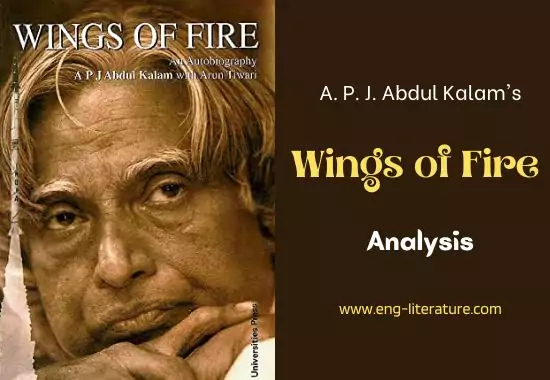
Wings of Fire Analysis
A.P.J. Abdul Kalam is a prolific Indian scientist of International repute. He also become the 11 th president of India . (2002-2007). He is a burning inspiration to the young chap for his motivational speech and fruitful quotations. Infect his entire life is read like a living inspiration to one who wants to succeed in life from a very low level. He is very well-known across India and is a recipient of India’s three biggest civilian awards -Padma Bhushan, Padma Vibhushan and Bharat Ratna. Wings of Fire is an autobiography of Abdul Kalam written jointly by Arun Tiwari and Abdul Kalam. If covers Kalam’s life before he became the president of India and in 2013 another autobiography titled “My Journey-transforming dreams into action” was released.
The book Wings of Fire covers his early life and his work in Indian space research and missile programmes. It is the story of a boy from a humble background who went on to become a keyplayer in Indian space research and Indian missile programmes. The book has been very popular in India and has been translated into multiple languages. It unfolds the story of Kalam from his childhood in seven sections – Preface, Acknowledgements, Introduction, Orientation, Creation, Propitiations contemplation and Epilogue.
The section ‘creation’ traverses seven chapters (from chapters 4 to chapter 10) and cover’s Kalam’s life and work for 17 years from the year 1963 until 1980. If begins with the recollection of his works at the Langley Research centre NASA, in Houston, Virginia (US) and at other facilities in the U.S.A. including the Wallop’s Flight Facility at Wallop’s island in East Coast of United States (Virginia). At a Nasa facility, he remembers to have seen a painting of Tippu Sultan, prominently displayed in the lobby which depicted Tippu Sultan’s rocket warfare against the British.
“The painting caught my eye because the soldiers on the side launching the rockets were not white, but dark-skinned, with racial features of people found in South Asia. One day my curiosity got the better of me, drawing me towards the painting. It turned out to be Tippu Sultan’s army fighting the British. The painting depicted a fact forgotton in Tippu’s own country but commemorated here on the other side of the planet. I was happy to see an Indian glorified by NASA as a hero of warfare rocketry.”
His association with Thumba and Satellite Launch Vehicle and related projects are vividly presented in the section creation.’ During this period, in the year 1976, Kalam lost his father who lived upto 102 years of age. Kalam took the bereavement with courage and remembered those words written on the death of William Butler Yeats by his friend Auden and his father:
“Earth, receive an honoured guest William Yeats is laid to rest. In the prison of his days, teach the free man How to praise!”
This period also brought Kalam national recognition. A pleasant surprise came in the form of conferment of Padma Bhushan on Republic Day, 1981.
- The Story of My Experiments with Truth Summary, Analysis, Book
The section PROPITIATION’ covers the period 1981 to 1991 and contains five chapters (from chapter 10 to Chapter 14). This section covers the scientific journey towards becoming the Missile Man of India.” In this section, his excellent leadership qualities as taking up the responsibility of shaping the Guided Missile Development Programme, are clearly visible. In this phase of life, Kalam was responsible for the development of five missiles Prithvi, Trishul, Akash, Nag and the most awaited one ‘AGNI
Kalam examines his early life, effort, hardship, fortitude, luck and chance that eventually led him to lead Indian space Research, Nuclear and Missile programmes. He started his career after graduating from Aero Space Engineering at MIT, Chennai (India) at Hindustan Aeronautics Limited and was assigned to build a hovercraft prototype. In this book, we learn how Kalam started his career in Aeronautical Development Establishment (ADE) and was involved in the design of the hovercraft. Later he moved to ISRO (Indian space Research Organisation) which was the brain-child of Vikram Sarabhai.
In 1963 he want to NASA facility in Maryland (USA) as part of a training programme on sounding rocket launching technique. He pioneered the first space launch vehicle Programme. During the 1990s and early 2000, Kalam moved to the DRDO, to lead the Indian Nuclear Weapons Programme with particular successes in Thermo Nuclear Weapons Development culminating in the operation ‘SMILING BUDDHA’ and an ICBM Agni missile.
The book, Wings of Fire is very engaging initially, but tends to drag a bit towards the end with a lot of technical details and procedural information of his space research and missile projects. However it gives a vivid picture of our country during 1930 to 1950. Kalam was born in Rameswaram, a southern religious town in Tamil Naidu. The initial chapters provide an interesting glimpse of the religious harmony that existed before India’s partition.
“The famous Shiva temple which made Rameshwaram so sacred to pilgrims was about ten minutes walk from our house- our locality was predominantly Muslim but there were quite a few Hindu families too, living amicably with their friendly neighbours.” “The high priest of Rameswaram Temple Pakshi Lakshmana Sastry was a very close friend of my father’s. One of the most vivid memories of my early childhood is of the two men each in his traditional attire discussing spiritual matters.” “One day when I was in my fifth standard at the Rameswaram Elementary School, a new teacher came to our class. I used to wear a cap which marked me as a Muslim, and I always sat in the front row next to Ramanadha Sastry, who wore a sacred thread. The new teacher could not stomach a Hindu priest’s son sitting with a Muslim boy. In accordnace with our social ranking as the new teacher saw it, I was asked to go and sit on the back bench. I felt very said and so did Ramanadha Sastry. He looked utterly downcast as I shifted to my seat in the last row. The image of him weeping when I shifted to the last row left a lasting impression on me. After school, we went home and told our respective parents about the incident.
Lakshmana Sastry summoned the teacher and in our presence told the teacher that he should not spread the prison of social inequality and communal intolerance in the minds of innocent children. He bluntly asked the teacher to either apologise or quit the school and the island. Not only did the teacher regret his behaviour, but the strong sense of conviction Lakshmana Sastry conveyed ultimately reformed the young teacher.”
Kalam in younger days wanted to be an officer in Air Force, however he could not clear the interview. He met Swami Sivananda after the failure and his words to Kalam were very interesting and in a way prophetic.
“Accept your destiny and go ahead with your life, you are not destined to become an Air Force Pilot. What you are destined to become is not revealed now, but it is predetermined. Forget this failure as it was essential to lead you to your destined path. Search, instead, for the true purpose of your existence. Become one with yourself, my son! Surrender yourself to the wish of God.”
The profundity and range of Kalam’s ideas would mesmerize anyone. He had tremendous vitality. His conversation was always fresh and stimulating. He had an intuitive rapport with the humblest and simplest people, an indication of his own simplicity and innate spirituality. In the introduction chapter, that the story is an account, I hope, not just of my personal triumphs and tribulations, but of the successes and set-backs of the science establishment in modern India, struggling to establish itself in the technological forefront. It is the story of national aspiration and of cooperative endeavour. Each individual creature on this beautiful planet is created by God to fulfill a particular role. Whatever I have achieved in life is through His help and an expression of His will. We are all born with a divine fire in us. Our efforts should be to give wings to this fire and fill the world with the glow of its goodness.
Kalam was of opinion that man needs his difficulties, because they are necessary to enjoy success and that adversity always presents opportunities for introspection. He was a man of great intellectual integrity and scholarship. This book covers a lot of ‘behind the scene information and technical details about India’s satellite and missile programme (SLV-3, Prithvi, Agni, Trishul, Akash and Nag). This might interest technically inclined readers but is sure to put out readers who wanted to get to know Kalam to know his principles and ideas. Space and missile programmes are huge complex projects and managing them is extremely challenging. The book does give a glimpse of the participatory management technique adopted by Kalam, but at the same time it does not go into details.
Wings of Fire covers Kalam’s personal life only briefly which is strange for an autobiography. For example we don’t know why he decided to remain single or his activities outside space research, even though we can conclude at the end that he was wedded to science and technology.
Kalam is a poet and is a huge fan of poems. The book contains many of his own poems and his favourite poems. Here is an example, which shows his brilliant skill of penmanship and dedication:
“Do not look at Agni as an entity directed upward to deter the ominous or exhibit your might It is fire in the heart of an Indian Do not even give it The form of a missile as it clings to the burning pride of this nation and thus is bright.”
Through Wings of Fire we came across some brilliant people who worked behind Indian Space Research such as Vikram Sarabhai and Dr. Brahm Prakash. The book also contains about twenty four photos-from the early days of Indian space programme- which are quite interesting.
One of things that stands out throughout the book is Kalam’s positive thinking. He held many high ranking positions in various organizations. Yet, in the book, he rarely mentions anything about lethargy or corruption of bureaucracy or politicians. The secret of his success seems to be his ability to ignore negative things around him. The book also gives a clue to his popularity in India. Thus Kalam is a simple, secular, inspiring humanitarian, who mingles with young children as pleasantly as he moves among elderly intellectuals. He is justly acclaimed as the people’s president.

Hello, Viewers! Besides being the Founder and Owner of this website, I am a Government Officer. As a hardcore literary lover, I am pursuing my dream by writing notes and articles related to Literature. Drop me a line anytime, whether it’s about any queries or demands or just to share your well-being. I’d love to hear from you. Thanks for stopping by!
Related posts:
- The Discovery of India by Jawaharlal Nehru | Critical Analysis
- The Story of My Experiments with Truth | Summary, Analysis, Book | Gandhi’s Autobiography
- Amar Jiban as an Autobiography
- The Whorehouse in a Calcutta Street | Analysis and Theme
- Jasmine by Bharati Mukherjee | Summary and Analysis
Leave a Comment Cancel reply
Save my name, email, and website in this browser for the next time I comment.
Explore - Experience - Excel
- +91 88806 12345
- [email protected]
- ISME Management Journal – Xplore
Book Review: Wings of Fire- APJ Abdul Kalam
Normal 0 false false false EN-US X-NONE X-NONE
The book Wings of Fire , the autobiography of A P J Abdul Kalam constitutes an extraordinary reading for all ages. There is something that everybody can extract from this book. In this book, the authors tell us the story of a young Muslim boy who has big dreams about his future and what inspires him to become an eminent scientist. This real story tells us the role of family, relatives and friends in helping a person in achieving his goals. Apart from the very indicative title, the chapters of the book are also touching –orientation, creation, propitiation, and contemplation.
Orientation contains 32 years of his early life – days as a child, going through adolescence and getting into rocketry. His description of the people, who shaped his life, interweaving religion and education, is a charming part of the book that almost nobody would miss reading.
Chapter 2 entitled ‘Creation’ describing the next seventeen years till 1980 covers his struggle at ISRO going from one-engineer-amongst-many to the successful project director of SLV bringing pride to the nation through the technological achievement of putting a satellite in the orbit.
The next ten years are set out in chapter 3. These constitute the outstanding accomplishments at DRDL. The way he transformed the laboratory from one which had a weak heart with little confidence to one which felt a sense of strong self-esteem and could feel proud by contributing developed missile systems to the services, is a remarkable saga.
The last chapter entitled ‘Contemplation’ contains a condensation of ideas and thoughts arising out of his colourful life, the awards that he received (the highest honour, namely Bharata Ratna that he received does not find a mention in this book) and some messages for the future generation.
The author through this book and the various chapters builds a quick rapport with the reader, who is spellbound. It stresses on the point that the youth should not get disheartened by failures. According to him, source of hidden knowledge is within us, with whom we should communicate. It is an inspirational book for everyone, especially the youth, with a message not to get bogged down in life, due to personal tragedies and setbacks in professional life.
Prof. Jharna Lulla
Faculty Economics and Placement Officer
International School of Management Excellence
The author of the article is Prof. Jharna Lulla, faculty at International School of Management Excellence, Navi Mumbai. She has done her Masters in Economics and PGDM. She has extensive experience in Industry before moving to academics. Prof. Jharna is currently writing a book on Macro Economics and is a prolific writer in journals and magazines.

IMAGES
VIDEO
COMMENTS
Soaring with "Wings of Fire". On a personal note, "Wings of Fire" has left an indelible mark on my psyche. Dr. Kalam's unwavering optimism and resilience in the face of adversity have inspired me to pursue my dreams relentlessly. His words serve as a constant reminder that with determination and perseverance, anything is possible.
Our efforts ought to be to give wings to this furnace and fill the world with the glow of its goodness." Introduction: Book Name: Wings of Fire. Author Name: A P J Abdul kalam, Arun Tiwari . Genre: Autobiography. Language: English . Reading a book is a good habit, the habit of reading is one of the best qualities that a person can possess.
Book Review "Wings of Fire" is an autobiography written by Dr. A.P.J. Abdul Kalam, the former President of India. The book tells the story of his life from his childhood in Rameswaram to his time as a scientist and later as the President of India. The book is divided into four parts, each covering a different stage of his life.
"Wings of Fire: An Autobiography of Abdul Kalam" is written by Dr. APJ Abdul Kalam and Arun Tiwari. This book is an autobiography of Dr. APJ Abdul Kalam, former president of India. This story sheds light on the journey of a young boy from Rameswaram to become a renowned scientist. It reflects how simple living, dedication, strong will and hard work led to success.
In conclusion, Wings of Fire is a literary masterpiece that captures the essence of Dr. APJ Abdul Kalam's incredible journey. This book review has explored the various facets of Kalam's life, from his visionary beginnings to his enduring legacy. Also, Wings of Fire continues to inspire individuals to dream big, persevere in the face of ...
Yet in the book he rarely mentions anything about lethargy/corruption of bureaucracy or politicians. The secret to his success seems to be his ability to ignore negative things around him. The book also gives a clue to his popularity in India. Kalam is a simple, secular, inspiring humanitarian. My Rating: 7/10.
'Wings of Fire' is the autobiography of Dr A.P.J. Abdul Kalam and contains the story of Dr Kalam's rise from a middle-class family with great determination and his unparalleled career as a defence scientist, culminating in the highest civilian award in India, the Bharat Ratna.The story also contains his journey as the 11th President of India in 2002.
4.28. 51,480 ratings2,215 reviews. Avul Pakir Jainulabdeen Abdul Kalam, the son of a little-educated boat-owner in Rameswaram, Tamil Nadu, had an unparalleled career as a defence scientist, culminating in the highest civilian award of India, the Bharat Ratna. As chief of the country's defence research and development programme, Kalam ...
Wings of Fire ignites the minds of Indian youths to make India even stronger in the field of technology. It proposes an India that is strong, on its own and fully-equipped to lead the world towards peace and a common goal of global harmony. Kalam's book is a must-read for teenagers, especially!
Wings of Fire. Wings of Fire (1999) by A.P.J. Abdul Kalam is an inspiring autobiography of a man's journey from humble beginnings to becoming India's 11th President. Here's why this book is worth reading: It offers valuable life lessons and insights into perseverance, determination, and the power of dreams.
This book resonates with the youth on the importance of giving wings to the divine fire within us. Book Review: Wings of Fire - An Autobiography by A.P.J. Abdul Kalam with Arun Tiwari ... Wings Of Fire; Tiwari, Arun (Author) English (Publication Language) 180 Pages - 01/01/1999 (Publication Date) - Universities Press (Publisher) ₹ 390 − ...
Published May 18, 2023. "Wings of Fire" by Dr. A.P.J. Abdul Kalam is an autobiography that takes readers on an extraordinary journey of a humble scientist who went on to become the President of ...
The book is a memoir which has been written very honestly by Kalam. He describes his journey — from his childhood to becoming the missile man of India — as it happened. One can feel the ...
Wings of fire is an autobiography of Dr. APJ Abdul Kalam. The book depicts the life of a simple but resolute individual. It contains a wealth of information that anyone will benefit from. Reading this book can be a joyful and lovely experience. The book is a detailed explanation of how great things can be accomplished with mindfulness.
The book is very impactful and influential. Published in 1999, Wings of Fire and "India 2020: A Vision For the New Millennium" became very popular. This book deals with every essential aspect of Kalam's life. The text takes us through the ups and downs faced by Kalam sir before tasting the success.
Wings of Fire (1999), is the autobiography of the Missile Man of India and the former President of India, Dr.A. P. J. Abdul Kalam.It was written by him and Arun Tiwari.. In the autobiography, Kalam examines his early life, effort, hardship, fortitude, luck and chance that eventually led him to lead Indian space research, nuclear and missile programs.
Wings of fire covers klaam sir personal life only briefly which is strange fir an autobiography . Kalam sir is a poet and I am a huge fan of his poetry. The book contain many of his poem and some of the words and phrases get attached with my heart. Through wings of fire, I had seen many great personality Vikram sarabhai and Dr. Brahm prakash .
Final Summary and Review of Wings of Fire. Wings of Fire covers the life of one of the most influential individuals in India's history. Abdul Kalam had a huge political influence on his home country, but he also influenced the scientific world. The message you can take from this book is to use desire, belief and expectations to achieve your ...
Wings of Fire edited by Jonathan Strahan & Marianne S. Jablon. I don't like dragons. This is probably not the first sentence you'd expect to find in a review of Wings of Fire, an anthology devoted exclusively to dragon stories, but I thought it best to get it out of the way right from the start. There's nothing inherently wrong with dragons.
Wings of Fire is an autobiography of Abdul Kalam written jointly by Arun Tiwari and Abdul Kalam. If covers Kalam's life before he became the president of India and in 2013 another autobiography titled "My Journey-transforming dreams into action" was released. The book Wings of Fire covers his early life and his work in Indian space ...
Wings Of Fire : an autobiography of APJ ABDUL Kalam ,former president of India. In this book Dr. Kalam examines his early life effort hardship fortitude luck...
The book Wings of Fire, the autobiography of A P J Abdul Kalam constitutes an extraordinary reading for all ages.There is something that everybody can extract from this book. In this book, the authors tell us the story of a young Muslim boy who has big dreams about his future and what inspires him to become an eminent scientist.
Hey Dear Students! This video - book review writing in English is for Wings of Fire written by Dr. A.P.J. Abdul Kalam and Arun Tiwari. This book review writi...
Church of the Redeemer, Episcopal Diocese of Texas, Houston. 5-26-2024 Trinity Sunday. Celebrant: The Rev. Lacy Largent, Preacher: Mr. Michael Thompson...